1lumen selects and reviews products personally. We may earn affiliate commissions through our links, which help support our testing.
Fireflylite LEP01 review
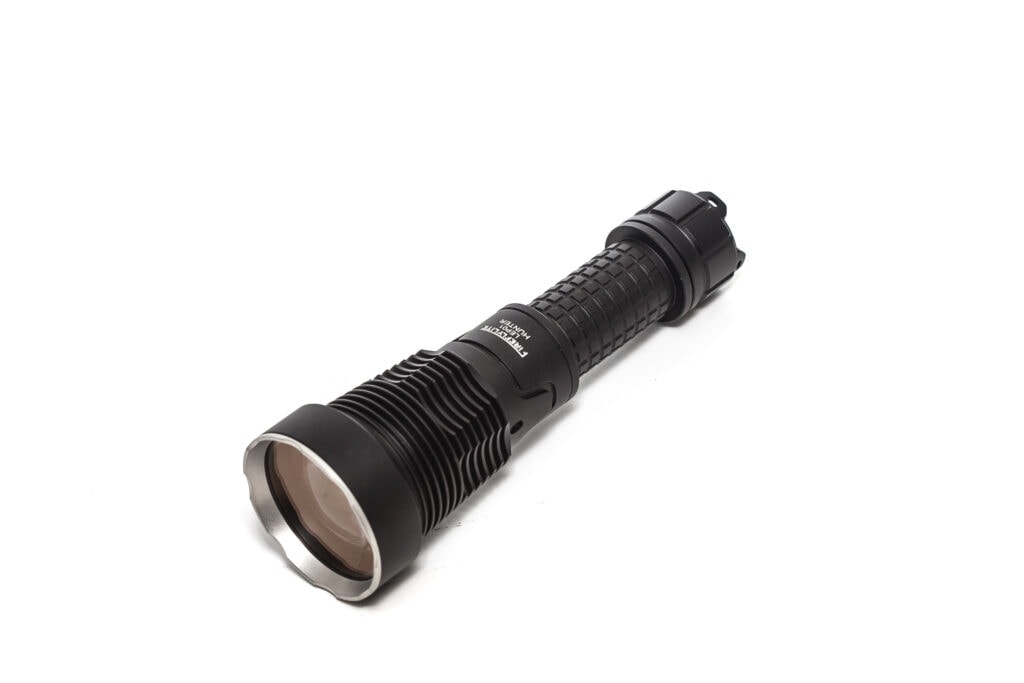
Fireflylite LEP01 Hunter specifications
| Brand/model | Fireflylite LEP01 Hunter |
|---|---|
| Flashlight category | LEP / long-range / searchlight |
| LEP | See through + Aux LED |
| Max. output | 450 Lumens |
| Max. beam distance | 2,100 meters |
| Max. beam intensity | 1,100,000 cd |
| Battery config. | 1*21700 |
| Onboard charging | USB-C |
| Modes | 2 |
| Blinkies | Strobe |
| Waterproof | IPX8 |
| Review date | October 2023 |
Review intro:
LEP flashlights have become the hype in the flashlight world for the last couple of years. And many company have jumped on the bandwagon to get their own share.
FireFlies, or Fireflylite, has also jumped on this wagon and introduced 2 LEP models at the same time. The Fireflylite LEP01 Hunter, and the Fireflylite LEP02 Arrows.
This particular review is on the LEP01, Hunter version, the biggest of the 2.
We’ve already reviewed a couple FireFlies flashlights, and we know that some models were very popular in the flashlight community. They normally use Anduril firmware for their flashlights, but this time, the LEPs got their own UI.
Let’s find out if that was a good choice.
Package quality.
Keep in mind that mine might still be prototype products, so I received mine in a generic Fireflylite package, with this inside:
- Fireflylite LEP01 Hunter
- 21700 battery with 5,000mAh and built-in USB-C port
- O-ring
- Remote control switch
I did not receive a manual, and no other accessories were included, like a charging cable, or holster etc.
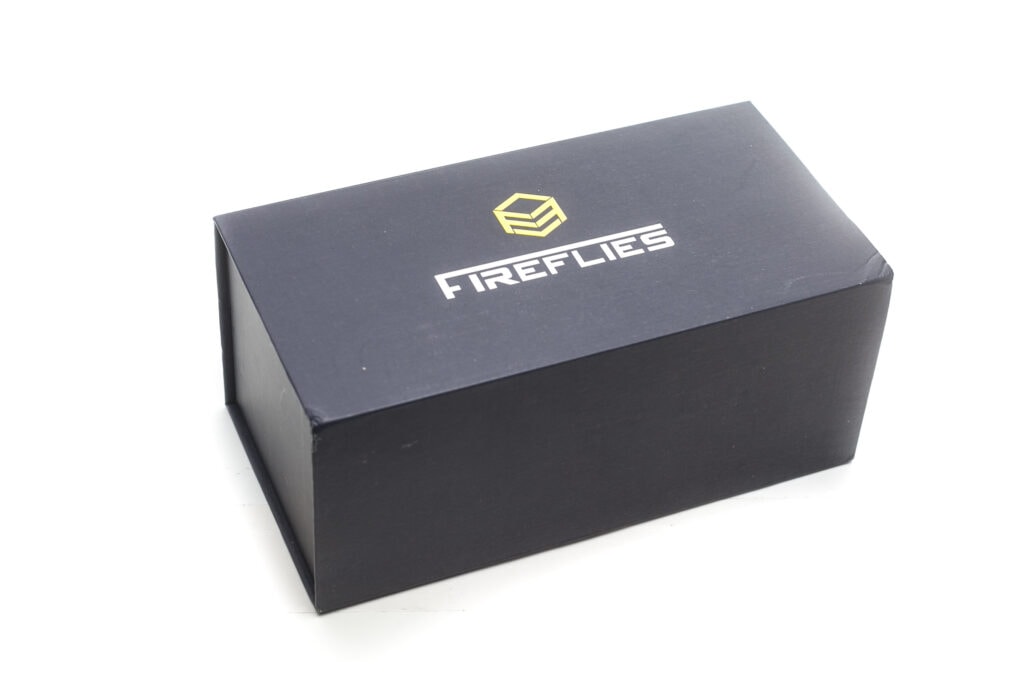
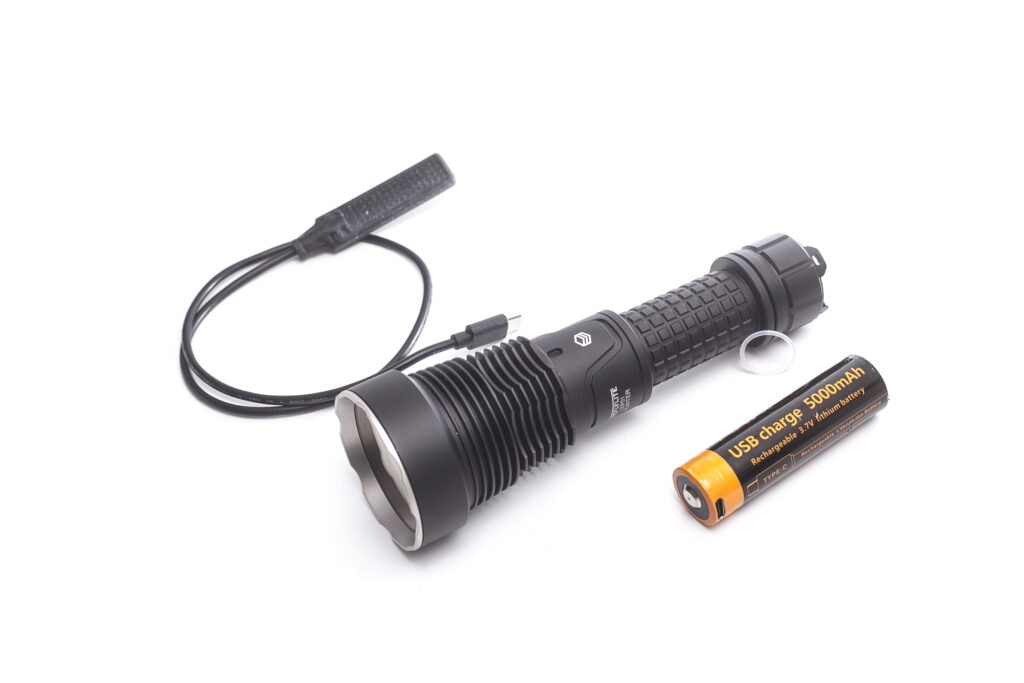
Flashlight in use, Build Quality, and Warranty
The LEP01 looks okay, and has some typical Fireflylite design patterns.
It’s black anodized with a relatively matte finish, without any problems or color differences. In the past we had some FireFlies with different colored parts, but these look pretty nice.
The threads on both ends of the battery tube are not anodized.
I must admit that I am not very fond of the extremely gritty threads when I received mine. I shared my feedback to FireFlies , hoping they address this before sending them out to regular buyers. Adding lots of lubrication helps though, but the aluminum almost feels too soft, resulting in a lot of aluminum shavings. As a precaution, I do recommend charging the battery inside the flashlight to avoid any complications with these threads!
I also had trouble getting one of these light to work (LEP01 or LEP02), since it uses a secondary tube, sitting loose inside the battery tube. This secondary battery tube is crucial for the switch and USB-C charging circuit to work. However, I would suggest FireFlies having a second look at this, since a loose tube like this can lead to complications, or even get lost. And we’ve seen a similar issue with the Lumintop FW3A from a couple of years ago. There are a few solution, and one you could do yourself is to reverse the battery tube, so the inner tube can not be removed from the rear, which makes it a bit less finicky. Threads on both ends of the battery tube are the same.
The reason why mine had some trouble, was mainly because of a loose driver retaining ring. After tightening it, the problem had solved. So make sure your retaining ring is tight, as well as your tailcap.
The Hunter uses a very quiet e-switch, located in the tailcap. And right next to the switch is the built-in USB-C charging connector located, below a metal cap.
In normal underhand grip, you need both hands for operation. In the overhand position, you can rest your thumb on the switch, which make it pretty easy to use, single-handed.
FireFlies also provided a remote switch, enabling you to mount the flashlight on a rifle. This feature positions the LEP01 as a potential hunting flashlight. Beyond hunting, you could use it for search and rescue, wildlife observation, marine navigation, of as a emergency beacon.
- Product Warranty
We provide 3 years’ manufactory warranty to fireflies flashlights. (Consumable batteries are not in warranty. )
DOA products can be returned and refunded within 15 days. We will bear all the returning shipping cost.
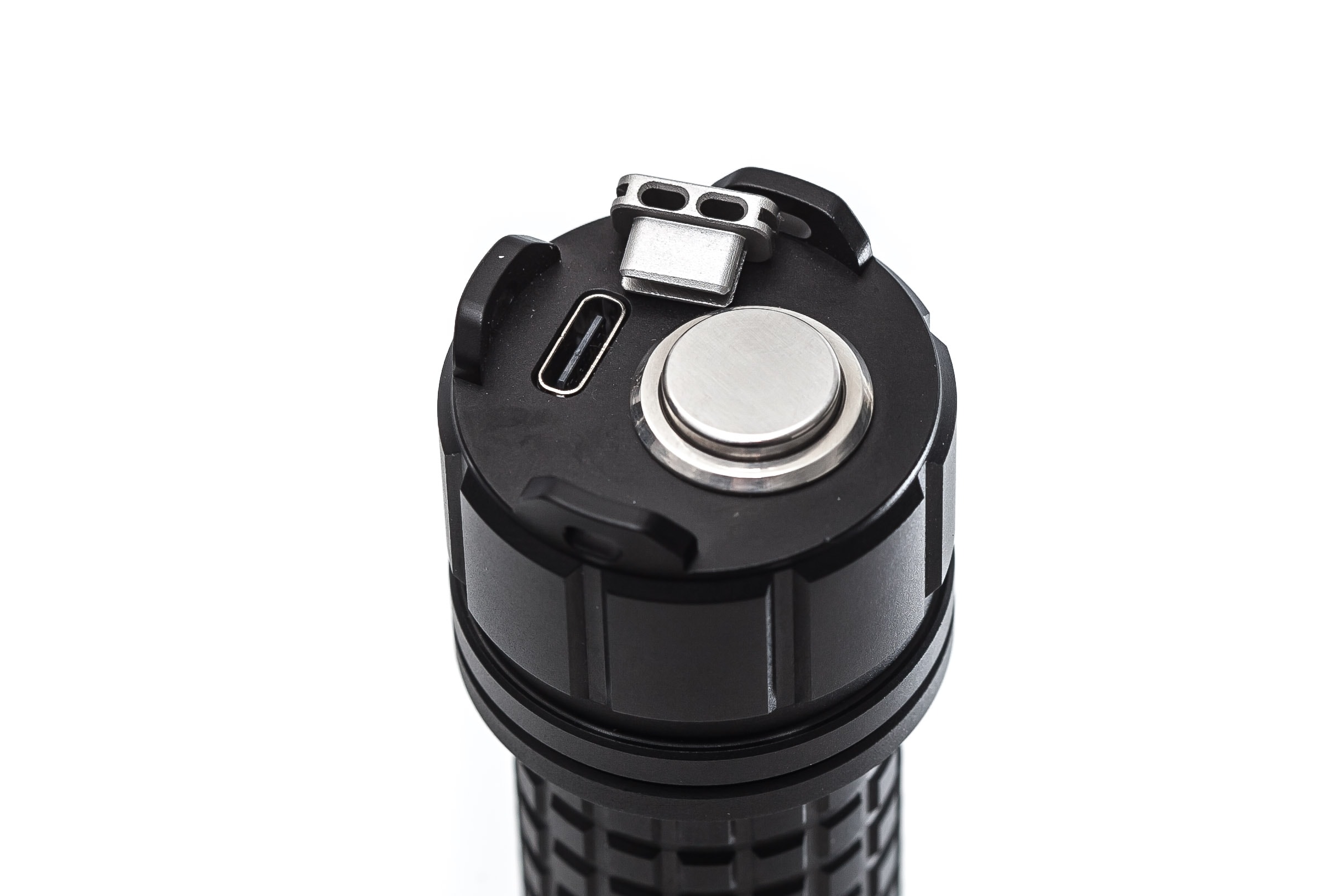
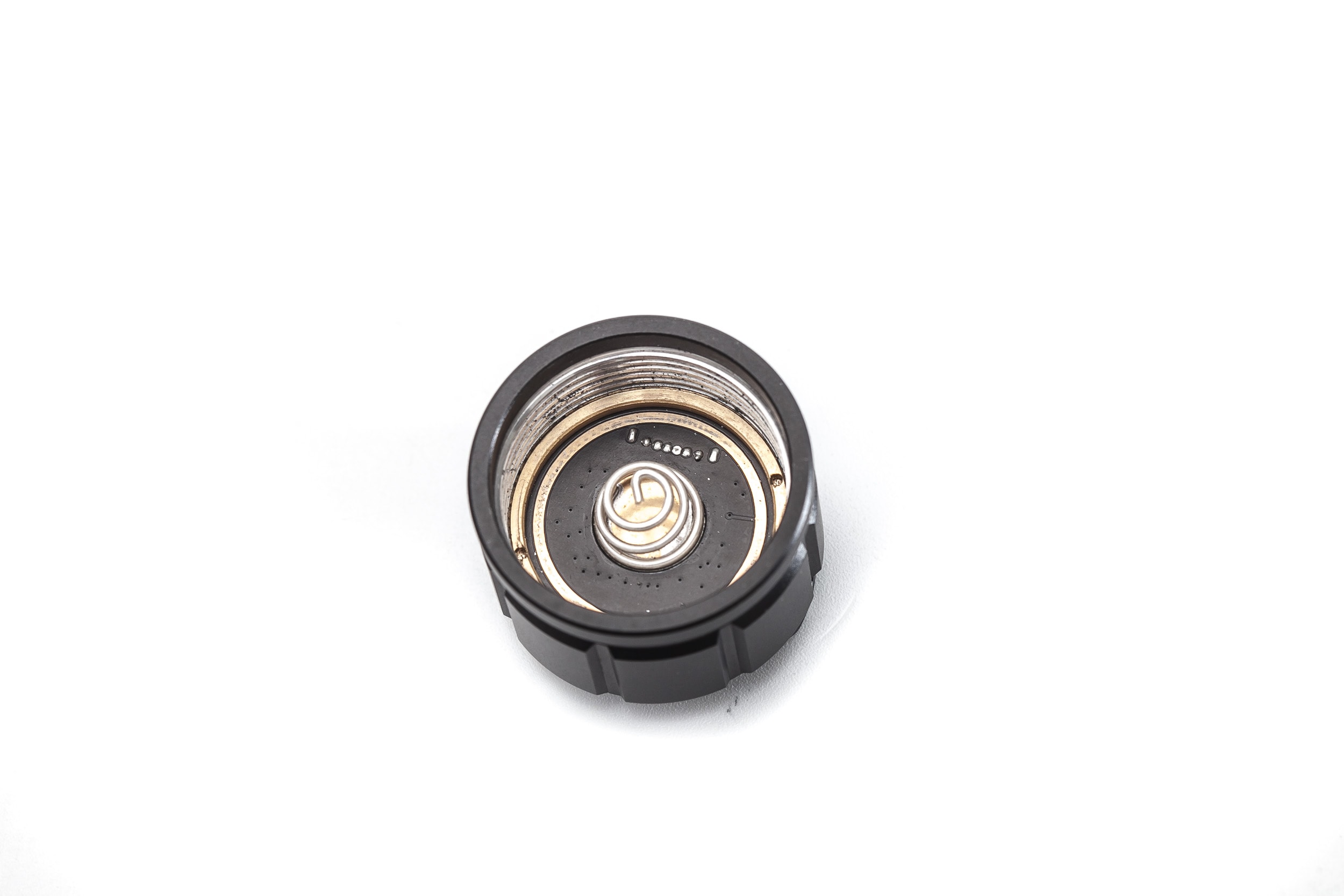


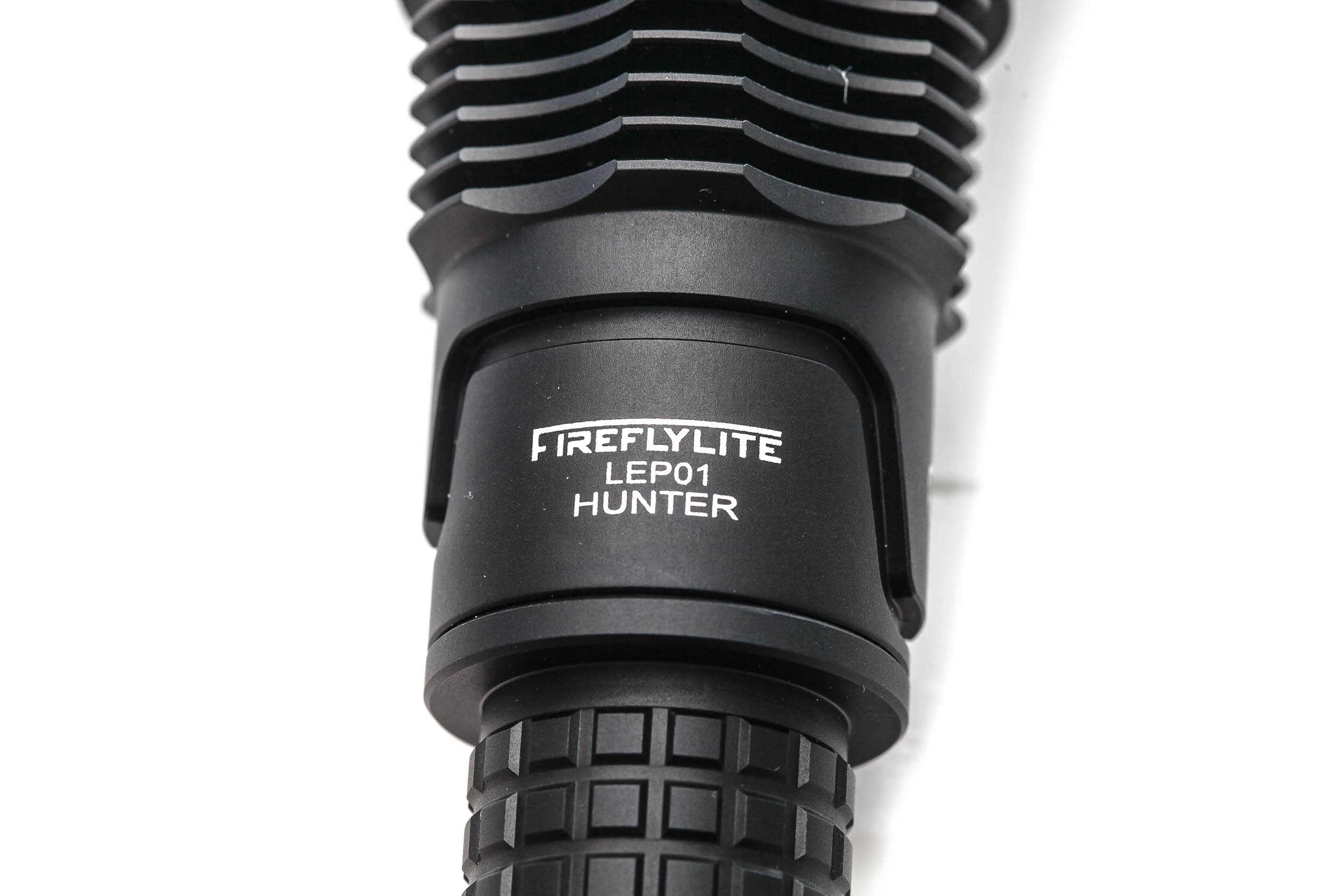
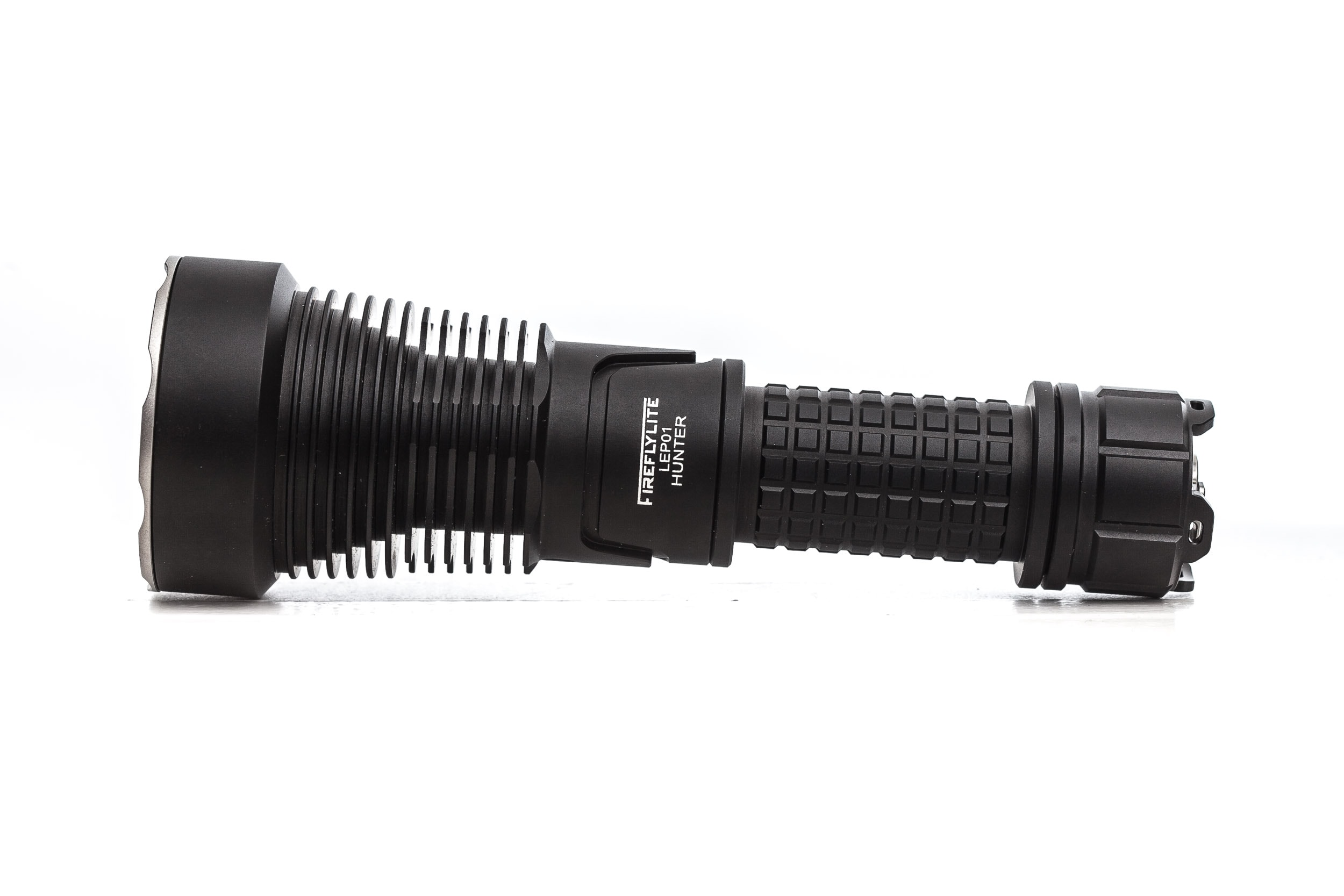
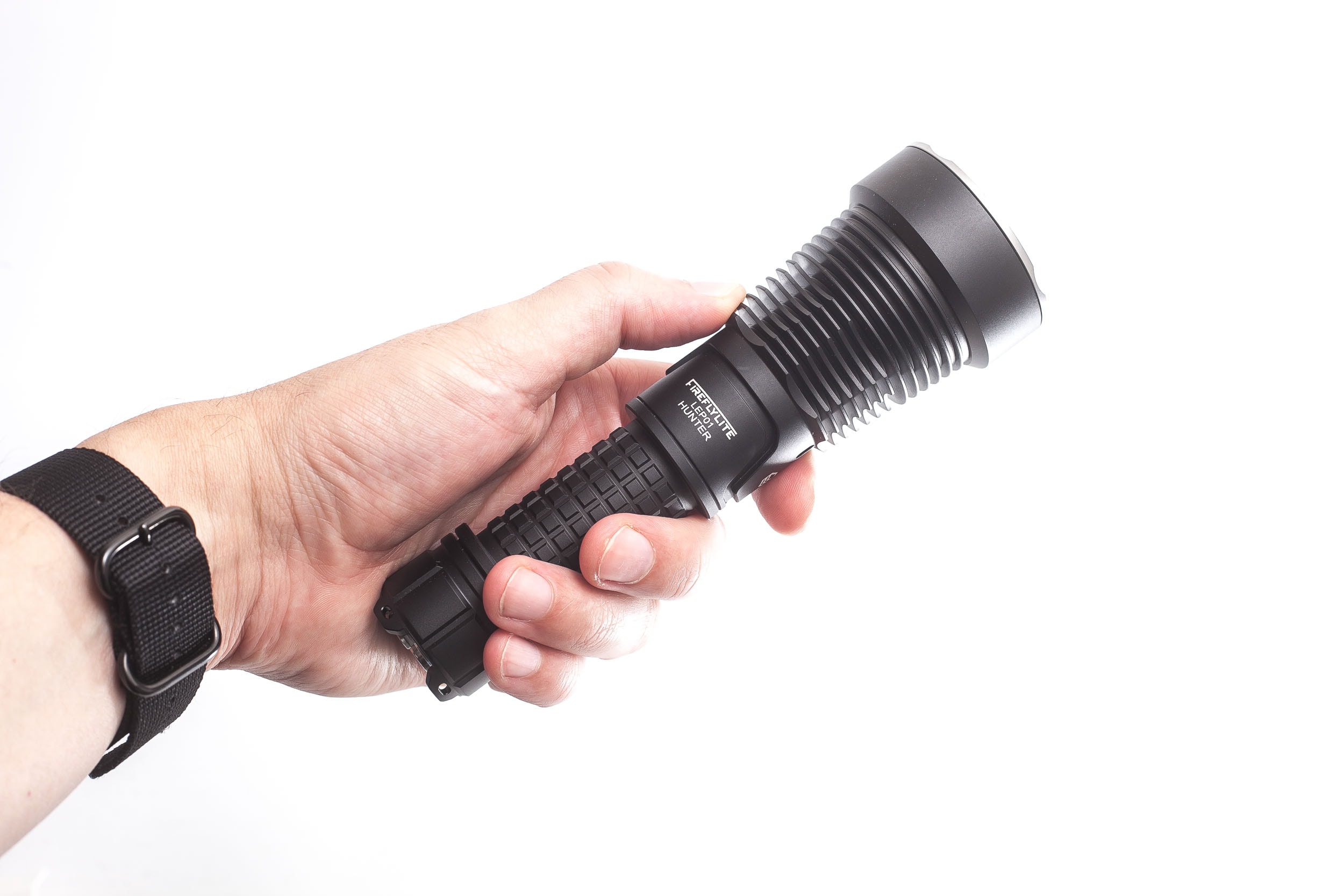
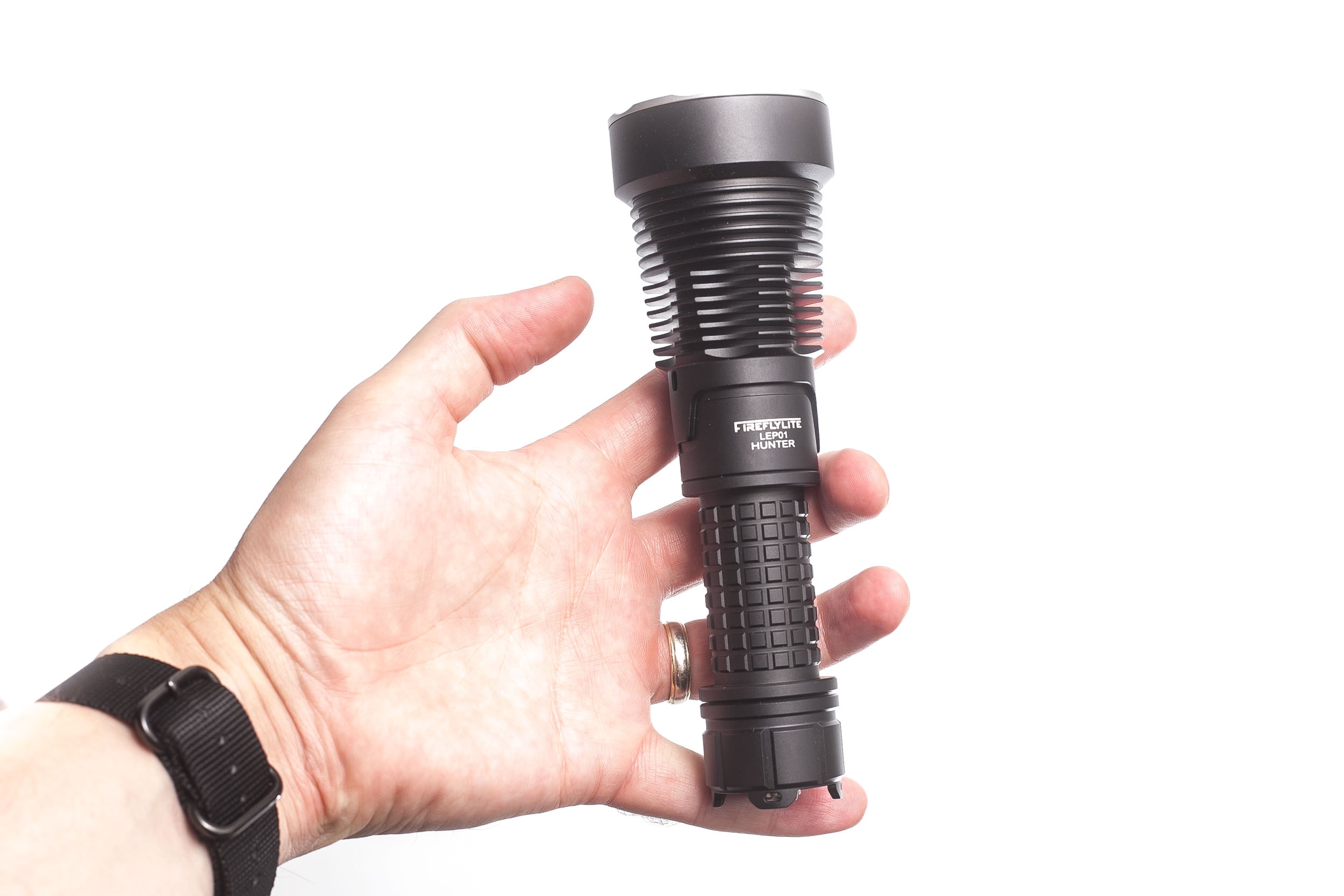
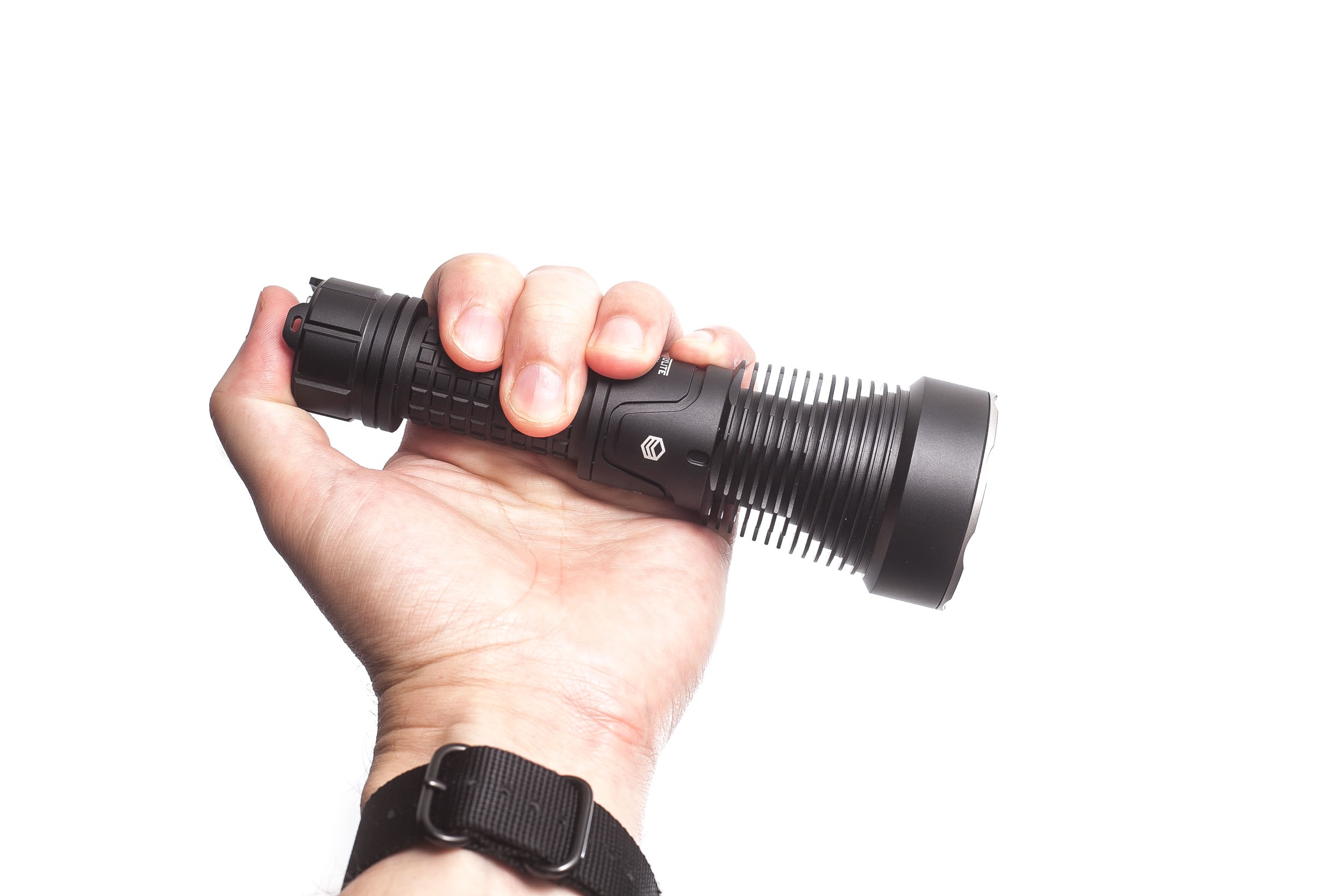
LEP, Lens, Bezel, Beam, and Reflector
Delving in the heart of the flashlight now, so let’s explore some of the key components. And first things first, the Fireflylite LEP01 Hunter is not an LED flashlight, but an LEP. LEP stands for Laser Excited Phosphor, and basically means that the light source is actually a laser. But the blue laser beam gets a little treatment from a layer of phosphor resulting in a yellow-ish/white-ish beam. And at this point, you would not think this to be a laser any longer. The beam looks just like an LED flashlight.
At the moment there are 2 types of LEP modules. There is the classic mirror type module, and there is a ‘shine-through’ module. And the Fireflylite is using the latter.
The biggest benefit of this type of module is the smaller module size. Instead of an inch by an inch module, you can get it as small as a half inch wide, and about an inch long.
However, Fireflylite didn’t just insert an LEP module, they also included several blue AUX LEDs that can be turned on for fun… yeah, they don’t serve much of a purpose. Or maybe, you can use it to locate the flashlight in the dark.
These AUX LEDs can be (de)actived by 9 fast clicks. And this is also a problem, because you need to do the clicks very fast, but it’s difficult to get exact 9 clicks without activating the light or strobe mode.
The bezel is removable, and I’m not sure whether it is stainless steel, but to me, it looks like coated aluminum.
The beam itself could also use some improvements. It’s a mix between a yellow hotspot, and blue rings around the beam. Fireflylite said they are working on the beam of the LEP02, but I would rather have them look at this beam instead.
It’s so fascinating to see the difference in beam colors, depending on the distance of the object you illuminate. When I point it at something only 1 meter away, the center and outer rings are very yellow. But when I take a few steps back, the yellow rings are completely gone, and turned blue instead. So doing beamshots at close distance would give you a totally different idea about the beam.
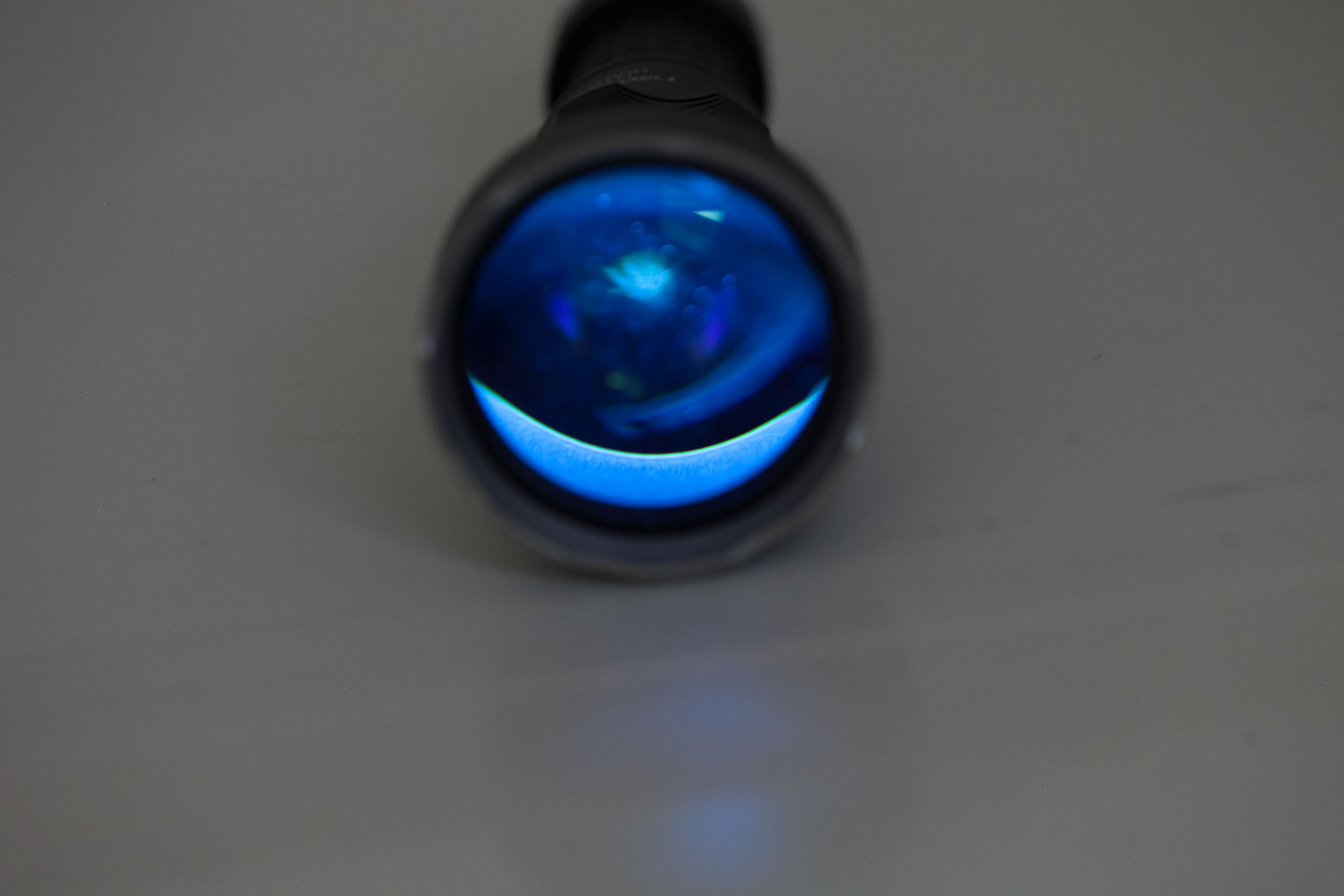
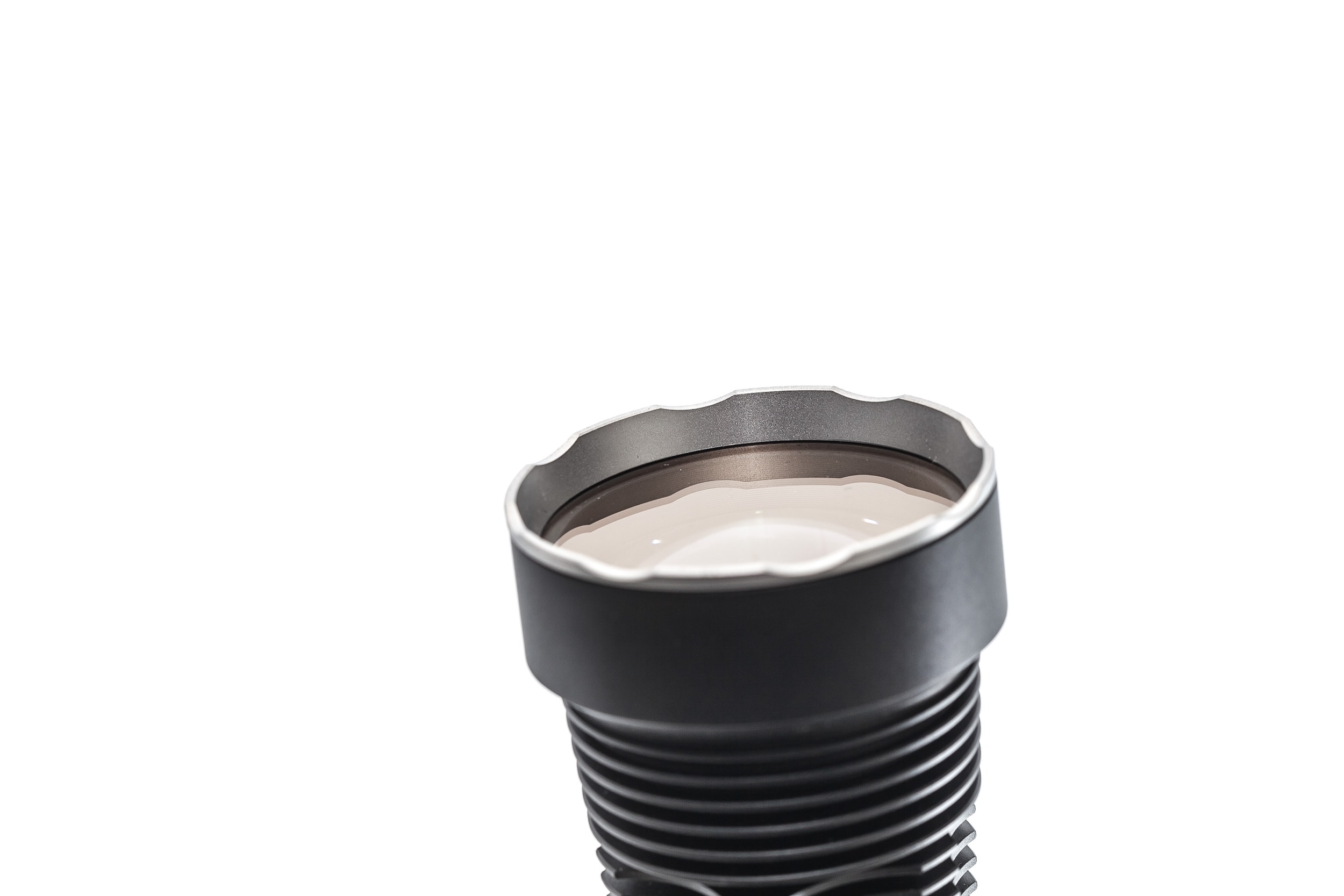
Dimensions and its competition
Dimensions:
| Fireflylite LEP01 | Millimeters | Inches |
|---|---|---|
| Length | 171mm | 6.7 in |
| Head diameter | 55 mm | 2.2 in |
| Body diameter | 27 mm | 1 in |
| Tailcap diameter | 34 mm | 1.4 in |
Dimensions are rounded to the nearest millimeter, and to the nearest tenth of an Inch.
Weight:
| Fireflylite LEP01 | Weight in grams | Weight in oz. |
|---|---|---|
| Without battery: | 240 g | 8.5 oz |
| With battery | 311 g | 11 oz |
Weight is rounded to the nearest gram, and to the nearest tenth of an Oz.
LEP Flashlight comparison
Size compared to other LEP flashlights
From left to right: Lumintop Petal, Maratac DX Reach rev2, Mateminco FW3, Lumintop X0, Fireflylite LEP02 Arrow, Trustfire T30R, FireFlyLite LEP01 Hunter, Nitecore P35i.
Group 2: Fireflylite LEP01, and Fireflylite LEP02

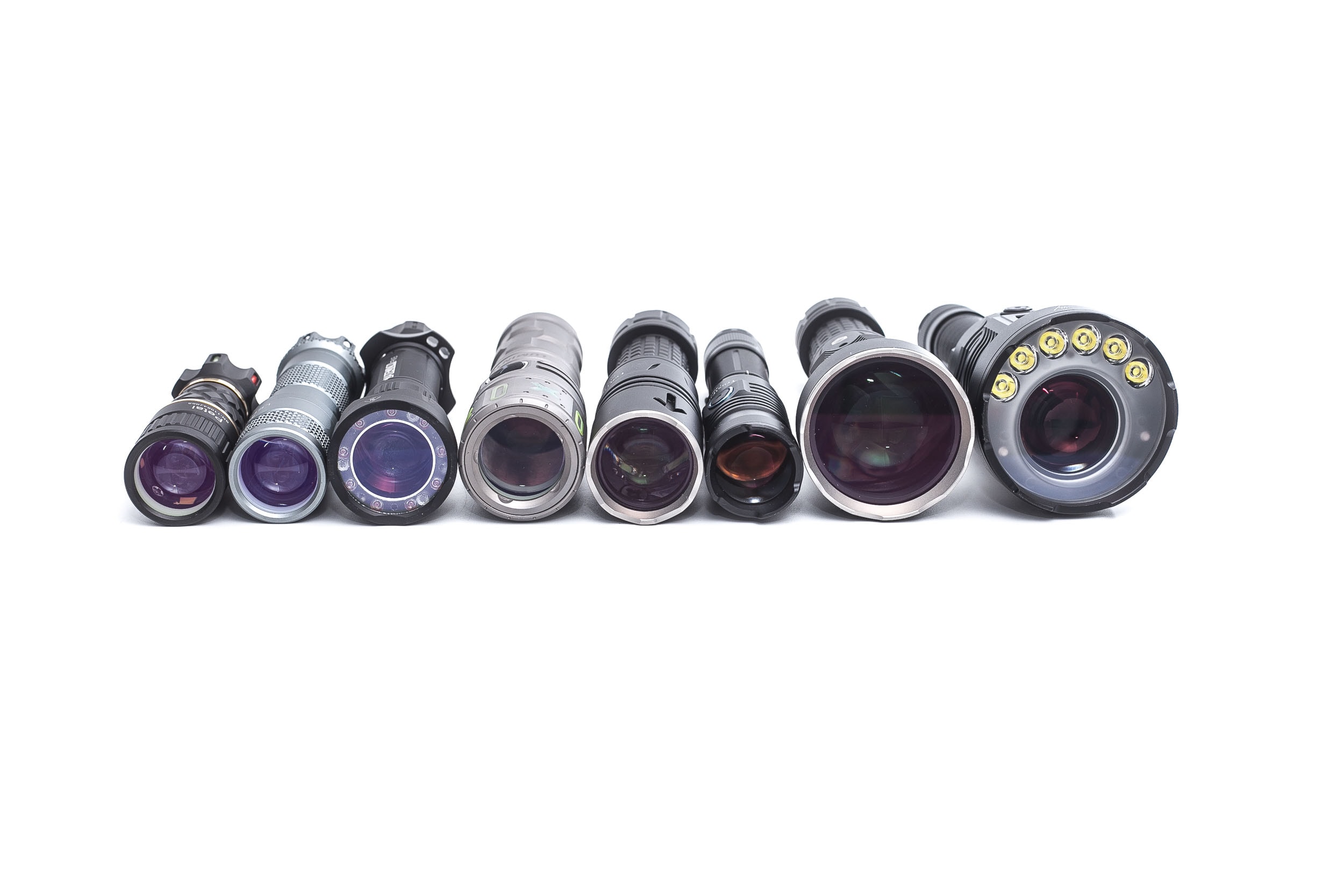
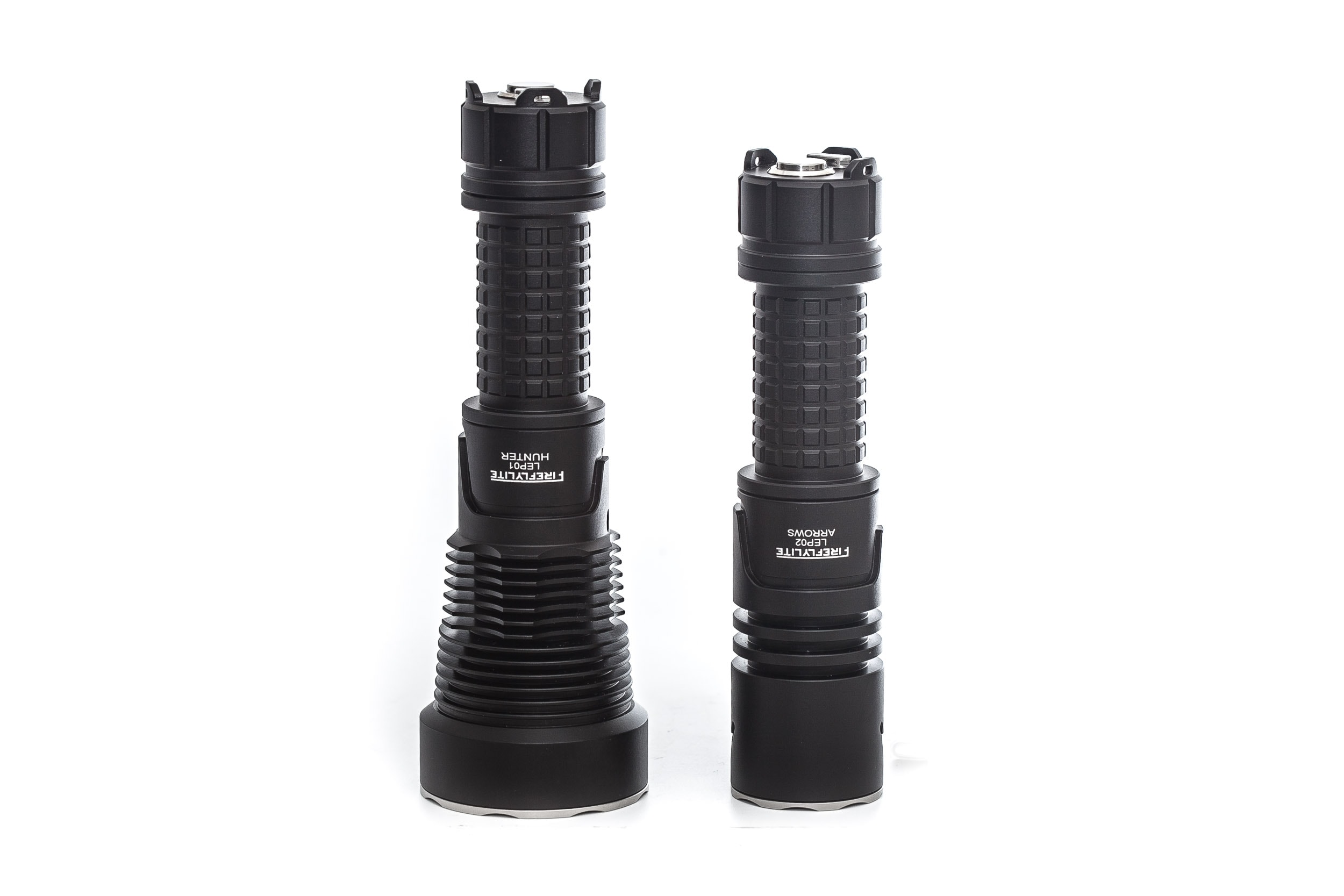


Fireflylite LEP01 UI : User interface and driver
The available main modes:
- High, Low
- Momentary mode High
The available special modes (blinkies):
- Constant Strobe
How the UI works when the flashlight is still turned OFF:
- Single-click: turns on in High
- Double click: Strobe
- Triple-click: activates Tactical mode (Momentary High) (the light is activated in High mode by pressing the switch, turning off upon release). A double click + hold at third click will deactivate.
- 9 fast clicks: activates AUX LEDs and repeat to deactivate
- Press and hold: nothing
How the UI works when the flashlight is turned ON:
- Single-click: turns off
- Double click: strobe
- Triple-click: nothing
- 4 clicks: lockout mode (this is not written anywhere on their website)
- Press and hold: switch from High to Low
Shortcuts within the UI:
- To High: single click from off
- To Strobe: double click from on/off
Mode memory:
- No, always starts in High
Blinky modes:
- Yes, continuous strobe. Activated by a double click in on/off.
Low battery warning:
- Not that I could see
Lock-out mode:
- Well.. not according to their information, but I could lock my light with 4 clicks from ON. Repeat 4 clicks to unlock.
PWM:
- Not visible by eye
Firmware / UI Conclusion:
- The UI is pretty easy to understand, but I don’t particularly like the double click for Strobe. And activating the blue AUX LEDs is also not very easy.
- The hidden Lock out mode is a little strange to say the least
Fireflylite LEP01 Hunter charging and batteries
The Fireflylite LEP01 includes a rechargeable 21700 battery, labeled a 21750 battery, and with the following product code: USB-21750. However, there is no brand name printed on it. So it’s just that, plus an indication of 18.5Wh, and 5,000mAh. I measured the length at almost 77mm.
Upon arrival, I measured the battery at 4.10 V. And even though they didn’t include charging cable in my package (which I assume they will do once they start selling these), you can use any USB-C cable you have lying around. I tested it with a good old USB-A to USB-C, and a USB-C to USB-C, and both worked.
Charging the battery is actually pretty slow (not in the flashlight, but with the USB-C port in the battery itself). It charges at about 0.7A, and the total charging time was 6 hours and 7 minutes. During the charge you can see a green light, that turns blue when it finishes charging.
You could also use other 21700 batteries, including flat top, unprotected batteries. But since they are pretty short, they will lose contact when you bump it.
| Charge type | Fits | No fit | Charge time |
|---|---|---|---|
| Batttery with onboard USB-C | All 21700 sizes | – | 06h 07min |
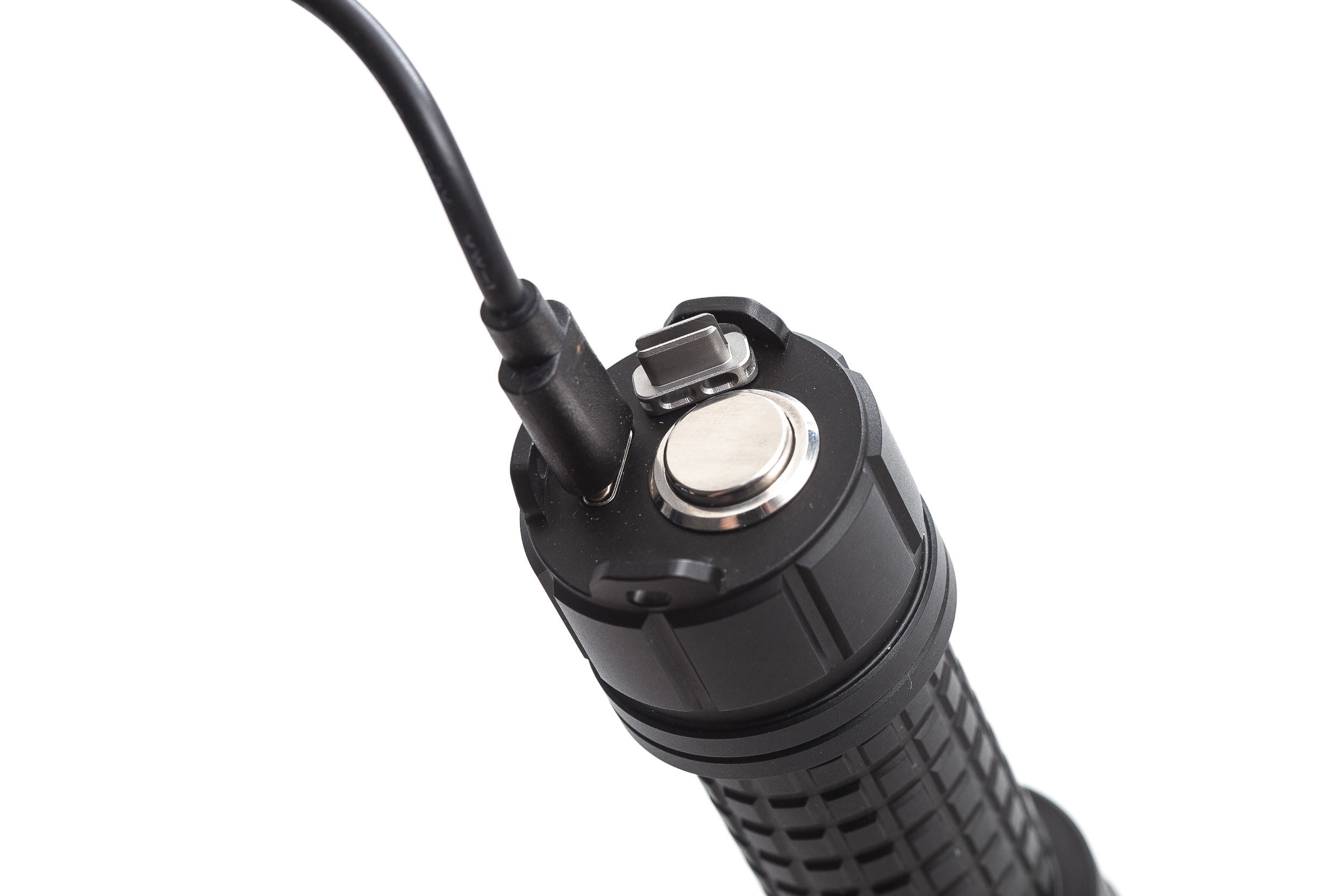
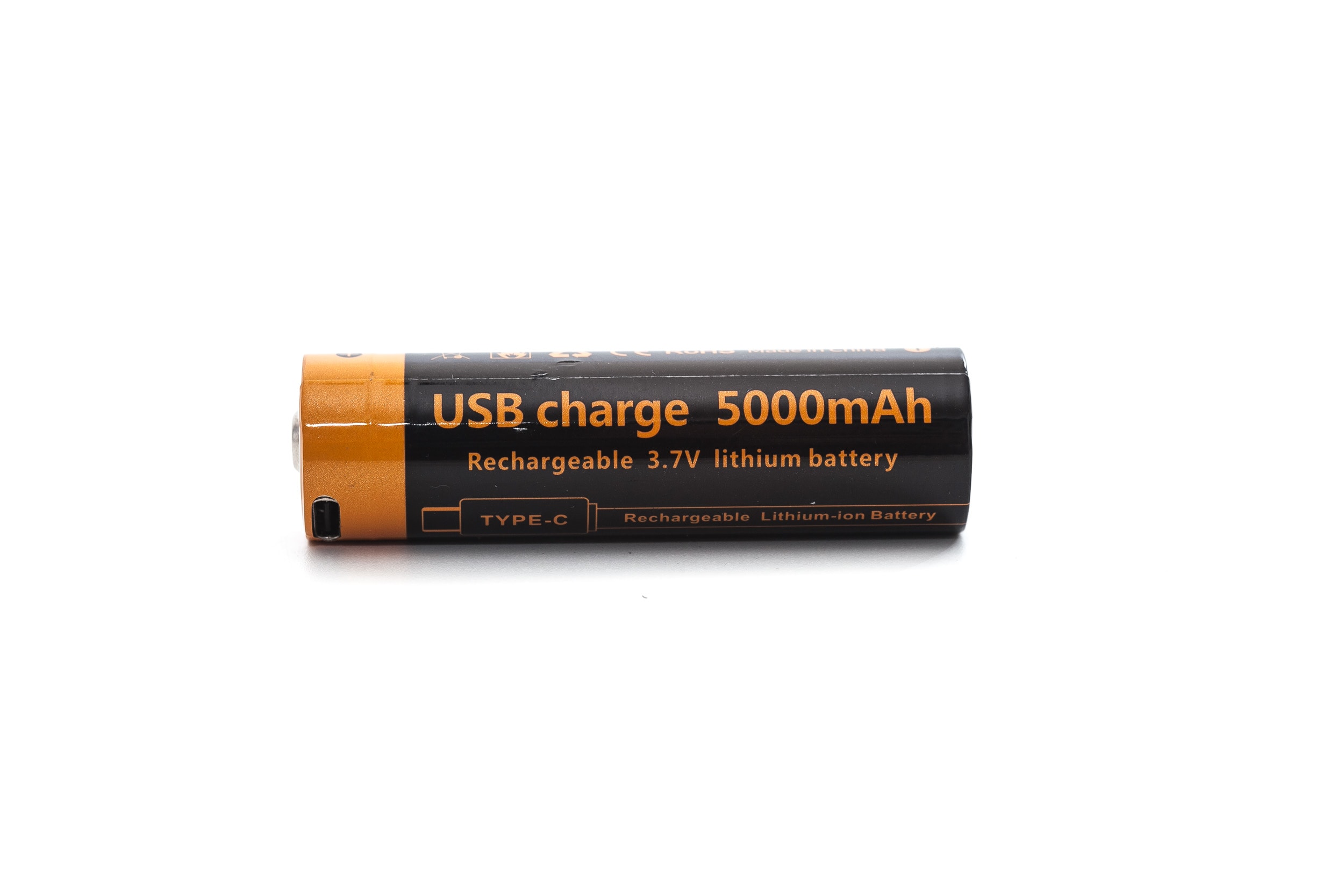
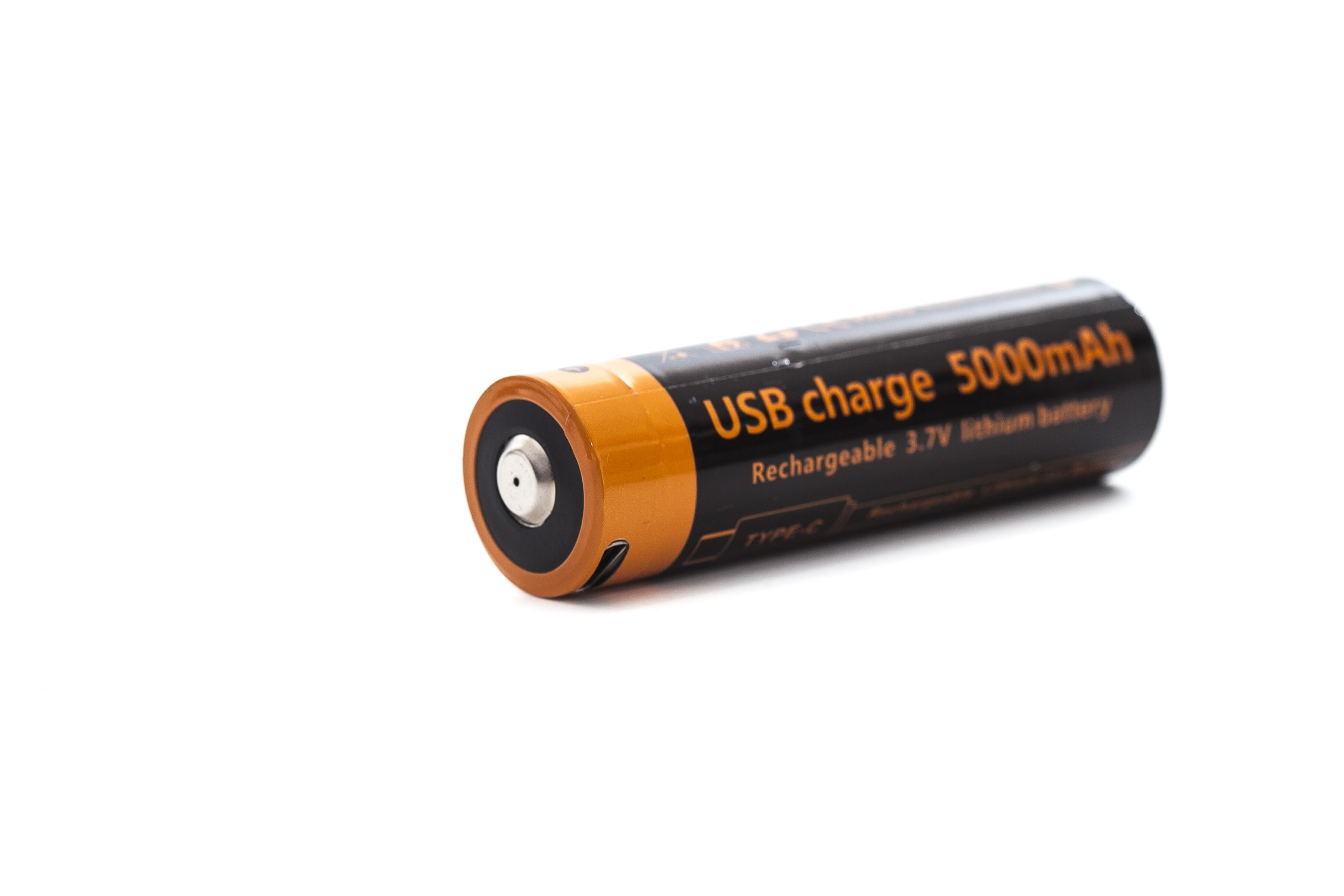

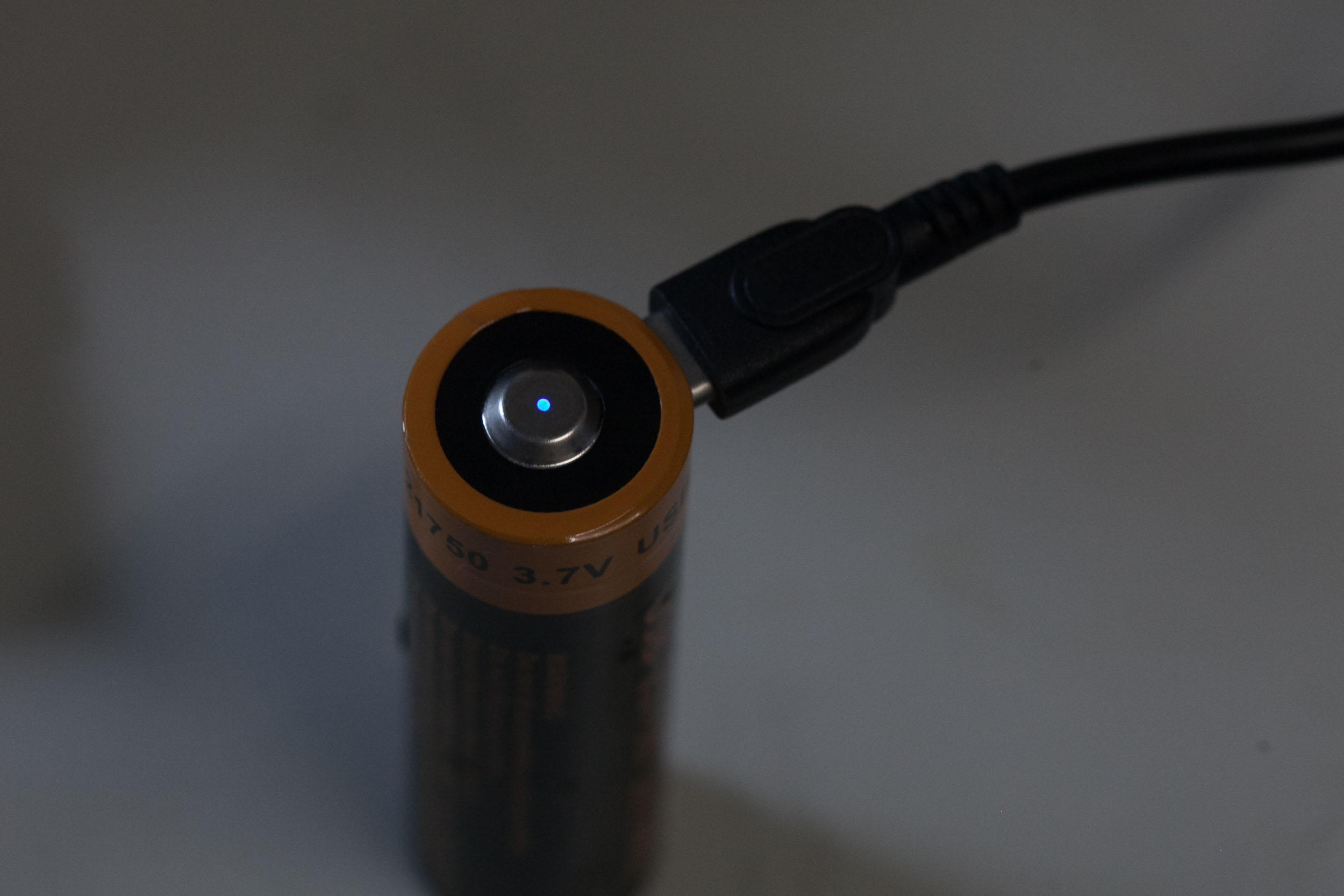
Performance test
This is the gear I use for testing:
| Gear | Purpose | Link to buy |
|---|---|---|
| Hagner E4-X | Measuring beam intensity (throw) | Inquire at Hagner.se |
| 2* Extech SDL400 | Lumens and logging runtimes | Amazon.com, Amazon.co.uk, |
| Leica Disto D2 | Distance for throw measurements | Amazon.com, Amazon.co.uk, |
| Sekonic C-800 | Spectrometer for LED measurements | Amazon.com, Amazon.co.uk |
| Uni-T UTi260B | Thermal Image camera | Amazon.com, |
Fireflylite LEP01 Hunter lumen measurements:
How Lumens are Measured: Understanding ANSI FL1 Standards How Lumens are Measured: Understanding ANSI FL1 Standards: The ANSI FL1 standards specify that output in lumens should be measured 30 seconds after turning on, as this is the standardized time for measuring brightness according to the industry standard. This is why we focus on this part in our measurements. The ANSI FL1 standards require an ambient temperature of 22 ± 3°C. We record the ambient the ambient temperature to identify potential reasons for any observed discrepancies.The output measurements in this review are based on my homemade integrating spheres, each equipped with an Extech SDL400 Lux Meter. For consistency and accuracy, a calibration light (Convoy S2+ with 249lm and a Convoy S2+ with 261lm) is measured prior to each set of lumen measurements.
For high-output lights, one of the lux meters uses an ND camera filter to prevent the lux meter to max out. This is either the Kenko PRO1D ND16 up till about 80,000 lumens or Gobe ND32 for anything above.
All of my readings were taken with the included battery, that was fully-charged before each runtime, and each major test.
The measurements were taken manually at turn on and 30 seconds. The 10 minute numbers are taken from the runtime graph.
| Mode | Specified | Turn on | 30 sec. | 10 min. |
|---|---|---|---|---|
| Low | – | 82 lm | 82 lm | 84 lm |
| High | 450 lm | 448 lm | 391 lm | 352 lm |
the FireFly-outdoor website mentions 450lm in the written specifications, but 500lm in the images. So, I gave them the benefit of the doubt, and used the 450lm as their specified output. The ff-light.com website doesn’t even show this particular model. And there is no mention of the output in Low mode.
It could almost reach the specified output at turn on, but that’s not according the ANSI FL1 standards, so they could only manage to produce 391 lm instead of the advertised 450 lm.
But lumens aren’t the most important factor when it comes to LEP flashlights. Even though things are slightly shifting with the newer, higher-lumen LEPs.
Fireflylite LEP01 Hunter Battery life and runtime
How Runtimes are Measured: Understanding ANSI FL1 Standards About ANSI FL1 runtime standards: The runtime is measured until the light drops to 10% of its initial output (30 seconds after turning on). This does not mean that the flashlight is not usable anymore. The last column shows how long the light actually works till it shuts off. If there is a + symbol, it means that the test was stopped at that particular point, but the light was actually still running. This happens on certain occasions, with certain drivers, firmware, or batteries.Runtime tests were conducted in my 50cm home made integrating sphere, paired with the Extech SDL400 data logging Lux Meter.
| Mode | Specified runtime | Measured runtime (ANSI FL1) | Time till shut off |
|---|---|---|---|
| Low | 4h 30min | 6h 21min | 6h 21min |
| High | 1h 30min | 3h 45min | 3h 45min |
Specifications weren’t filled out, but 1 of the images showed: Runtime 1.5hrs to 4.5hrs, so I assumed that to be 1.5h for high, and 4.5 for low.
But they clearly haven’t tested it. The runtimes aren’t even close to specified..
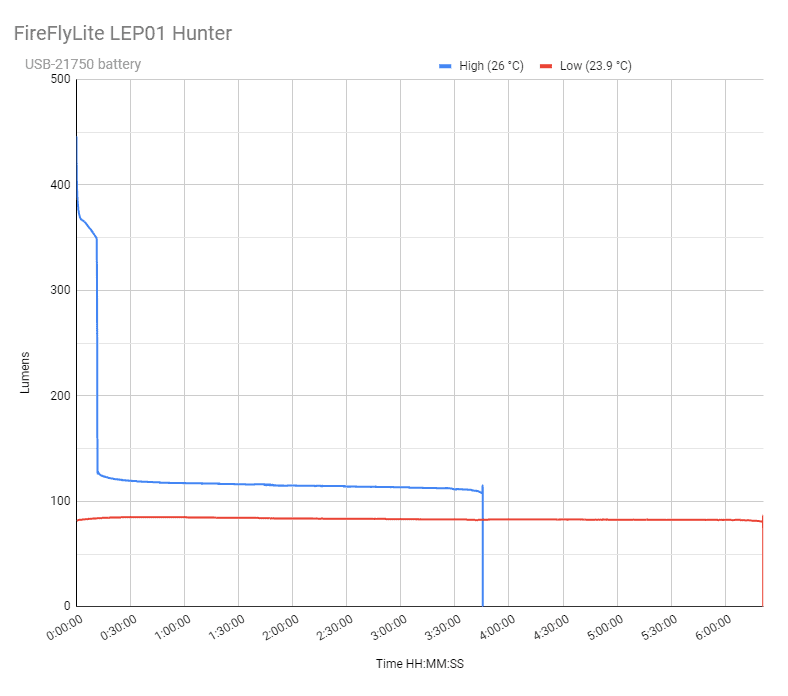

It’s great to see the highest output can be sustained for more than 10 minutes, a duration likely to cover most typical flashlight usage scenarios.
Fireflylite LEP01 Hunter Peak beam intensity and beam distance measurements
About Peak beam intensity: Understanding ANSI FL1 Standards About peak beam intensity The calculated value of distance in meters at which the flashlight produces a light intensity of 0.25 lux. (0.25 lux is about the brightness of a full moon shining on an object). This means that the intensity has decreased so much, it becomes difficult to see darker objects, or objects that don’t reflect light. The columns ‘Meters’ and ‘Yards’ use rounded numbers.Measurements were taken indoors and outdoors with a Hagner E4-X Lux Meter. The measurements were taken 30 seconds after turn on. Indoors at 5 meters, and outdoors at 20 meters.
First the 2 modes measured at 5 meters, and then both modes outdoors at 20 meters.
| Mode | Specified | Measured | Meters | Yards |
|---|---|---|---|---|
| Low (5m) | – | 237,500 cd | 975 m | 1066 yd |
| High (5m) | 1,100,000 cd | 1,082,500 cd | 2081 m | 2276 yd |
| Low (20m) | – | 164,000 cd | 810 m | 886 yd |
| High (20m) | 1,100,000 cd | 816,000 cd | 1807 m | 1976 yd |
I can’t really explain the different readings between the 2 distance measurements. But there are a few things that could influence the readings slightly….. 1. during testing outdoors there was a lot of stuff floating in the air, and indoors there was none, resulting in a lower reading outdoors. But almost 30% difference in candelas is strange. 2. the batteries were charged the day before going outdoors, while during indoor testing they are charged minutes before testing. But that also makes no sense. Also outdoors the temperature was lower, and should normally result in a better reading if anything. 3. at 5 meters distance, the beam of the Fireflylite is just at its peak, or converging, and then taper off.
All these reasons could have some influence, but that much is hard to accept. Fortunately, I tested several flashlights at the same time, and all measured lower, but not even close to the 30% difference of the Fireflylite . So, I guess there is something else with these Fireflylite flashlights that give such a big difference in readings.
I wish my house was bigger so I could measure beyond just the 5 meters indoors. But still, I think the readings at 20 meters are more realistic than the ones at 5 meters indoors. The reason is that LEP flashlights are used outdoors, not indoors.
Beamshots
For the following beamshots, I used a Canon EOS 5D mk2 with a 100mm lens. Manual settings: ISO1600, 0.5sec, F4, 5000K
The tower is about 450 meters / 492 yards away.
Compared to the following flashlights:
- Fireflylite LEP01 Hunter
- Fireflylite LEP02 Arrows
- Lumintop X0
- TrustFire T30R
- Fenix HT30R
- NLightD L1
- Amutorch BT60

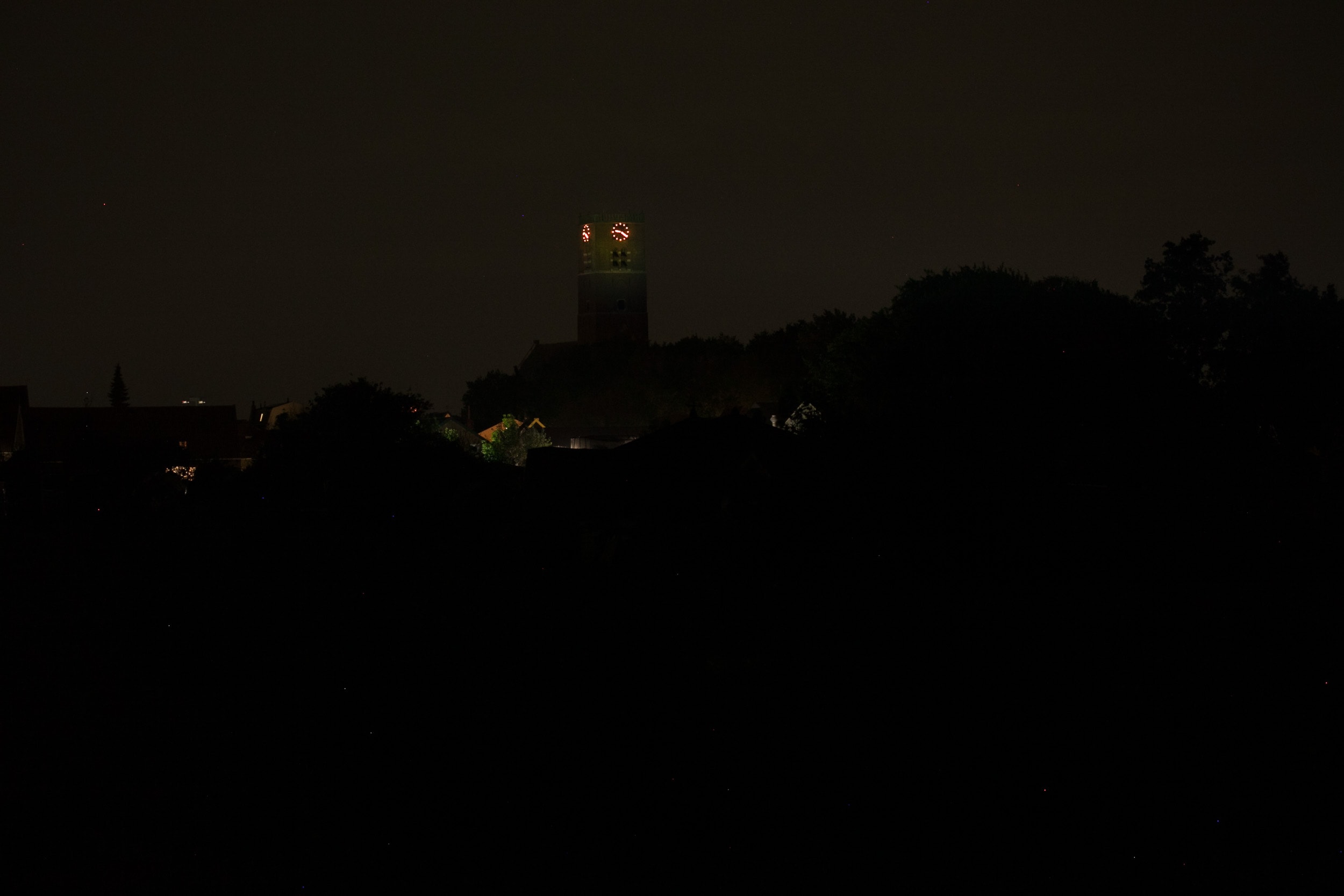

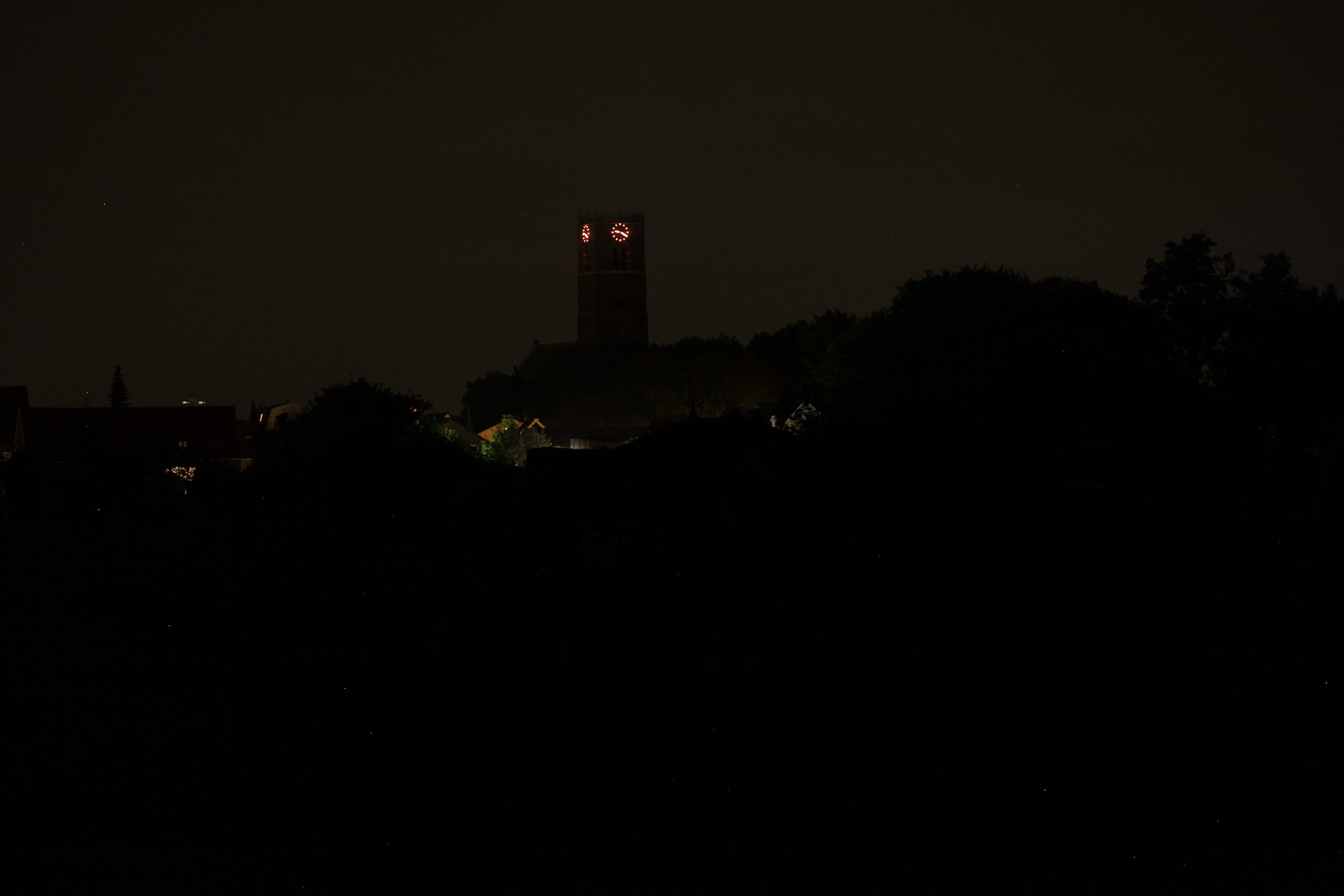
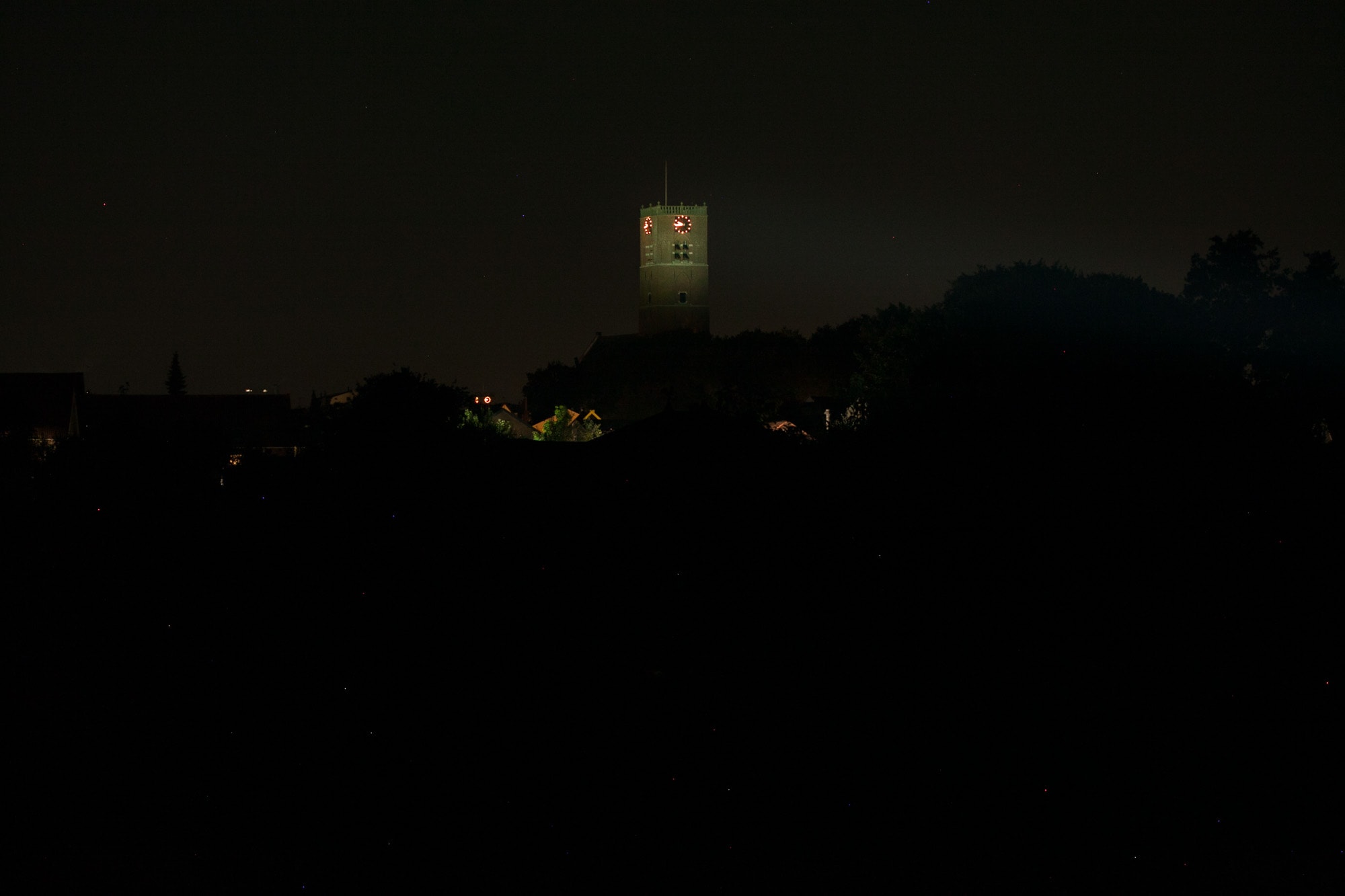
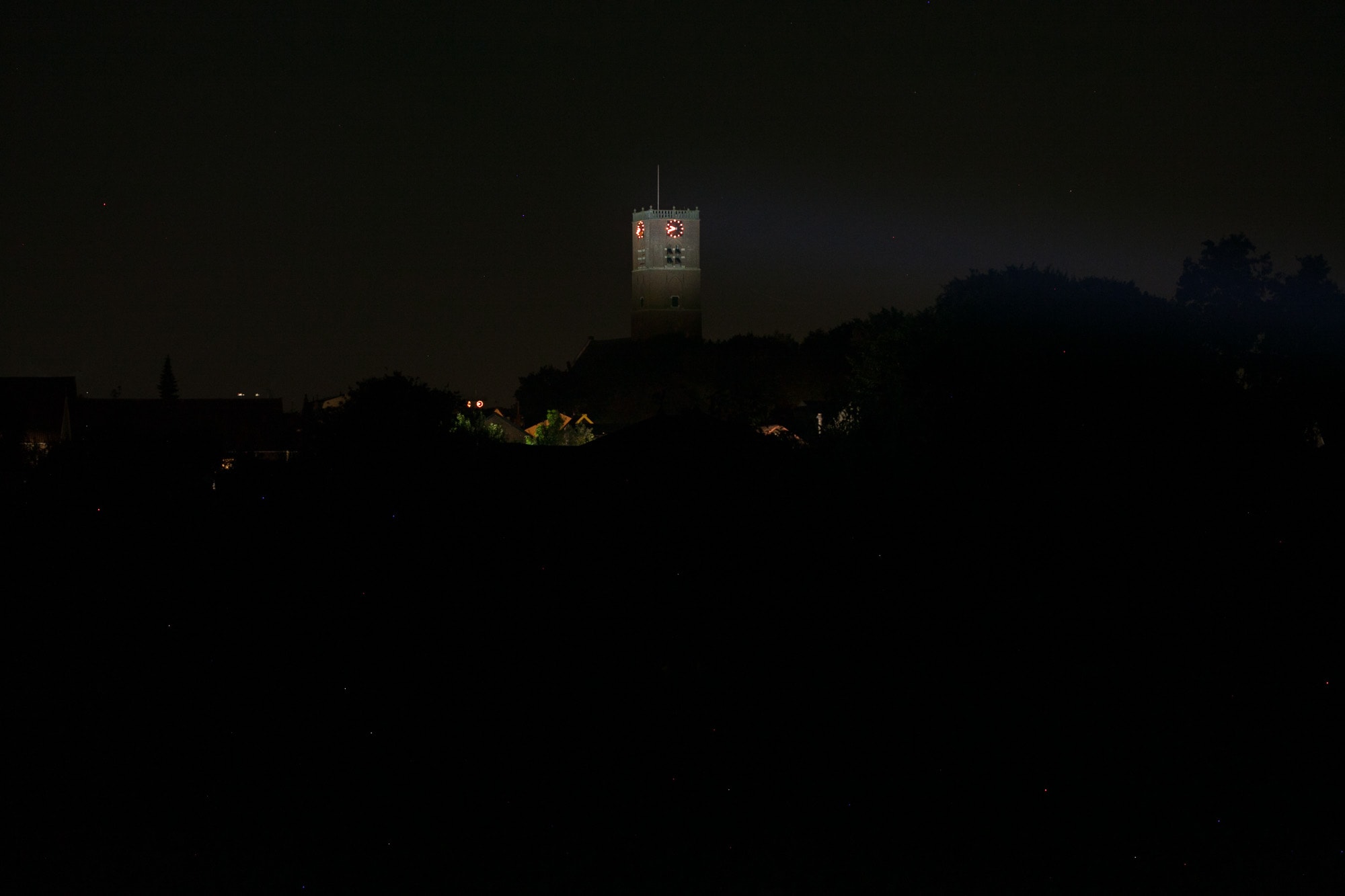
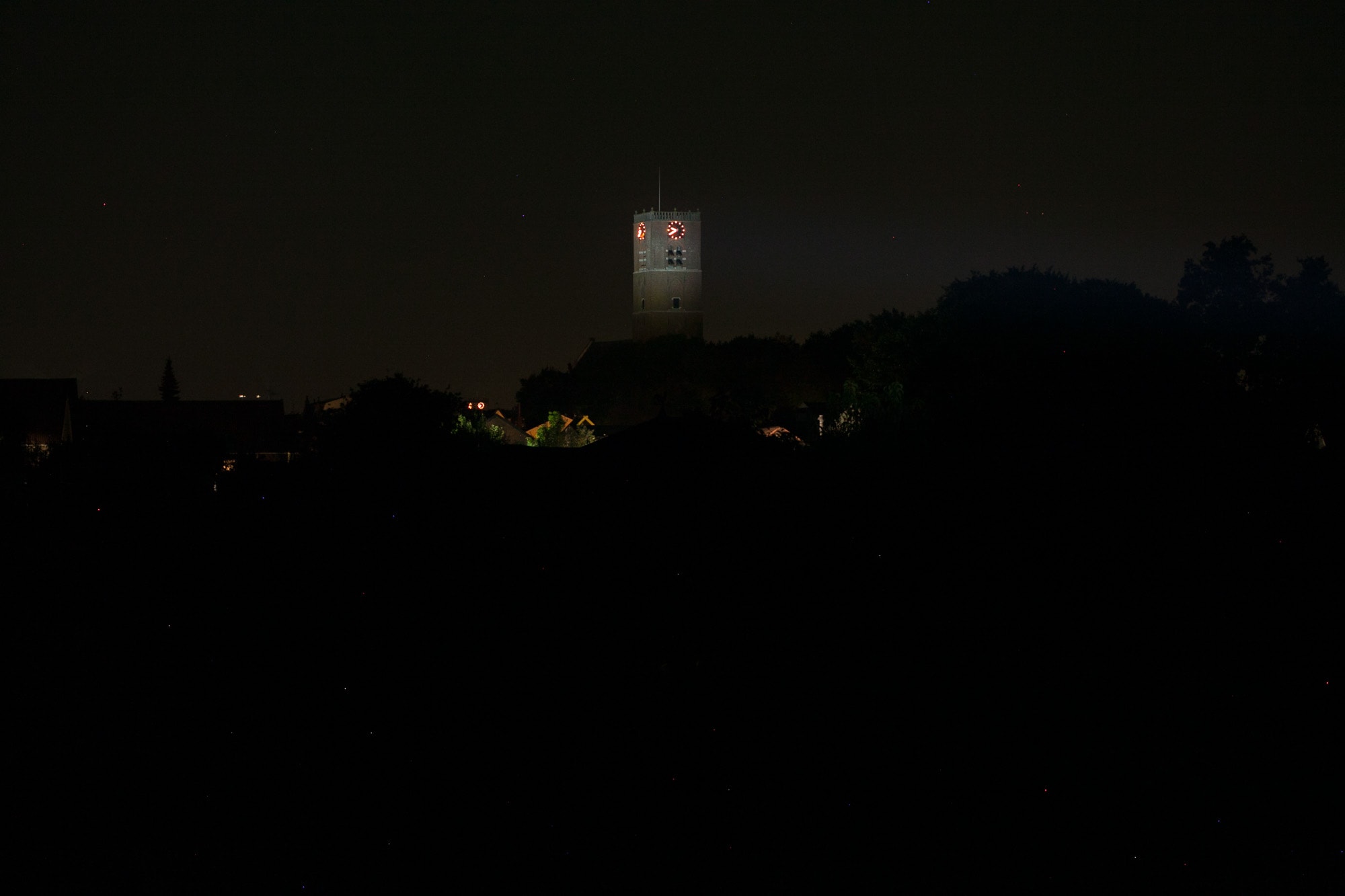
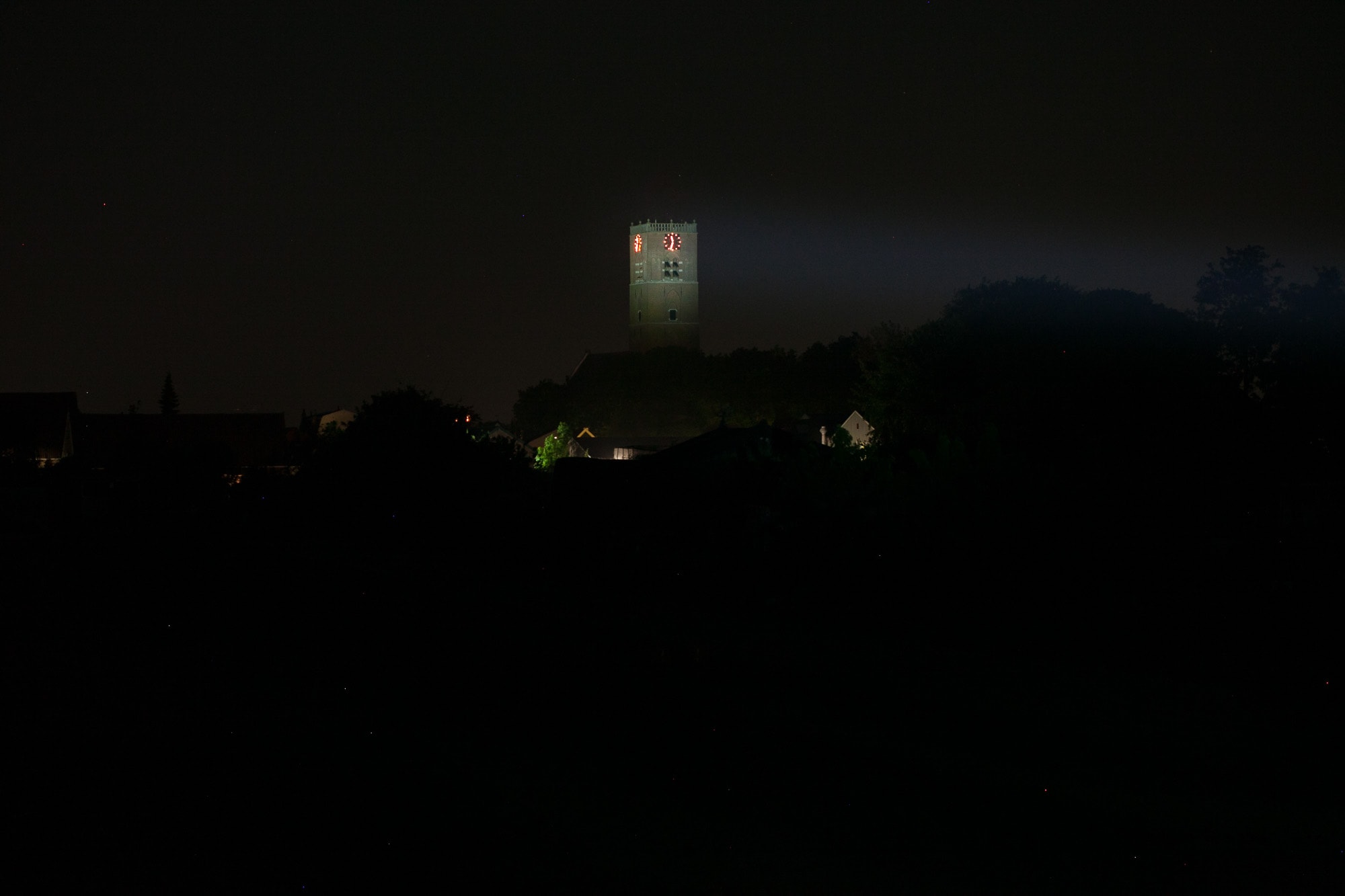
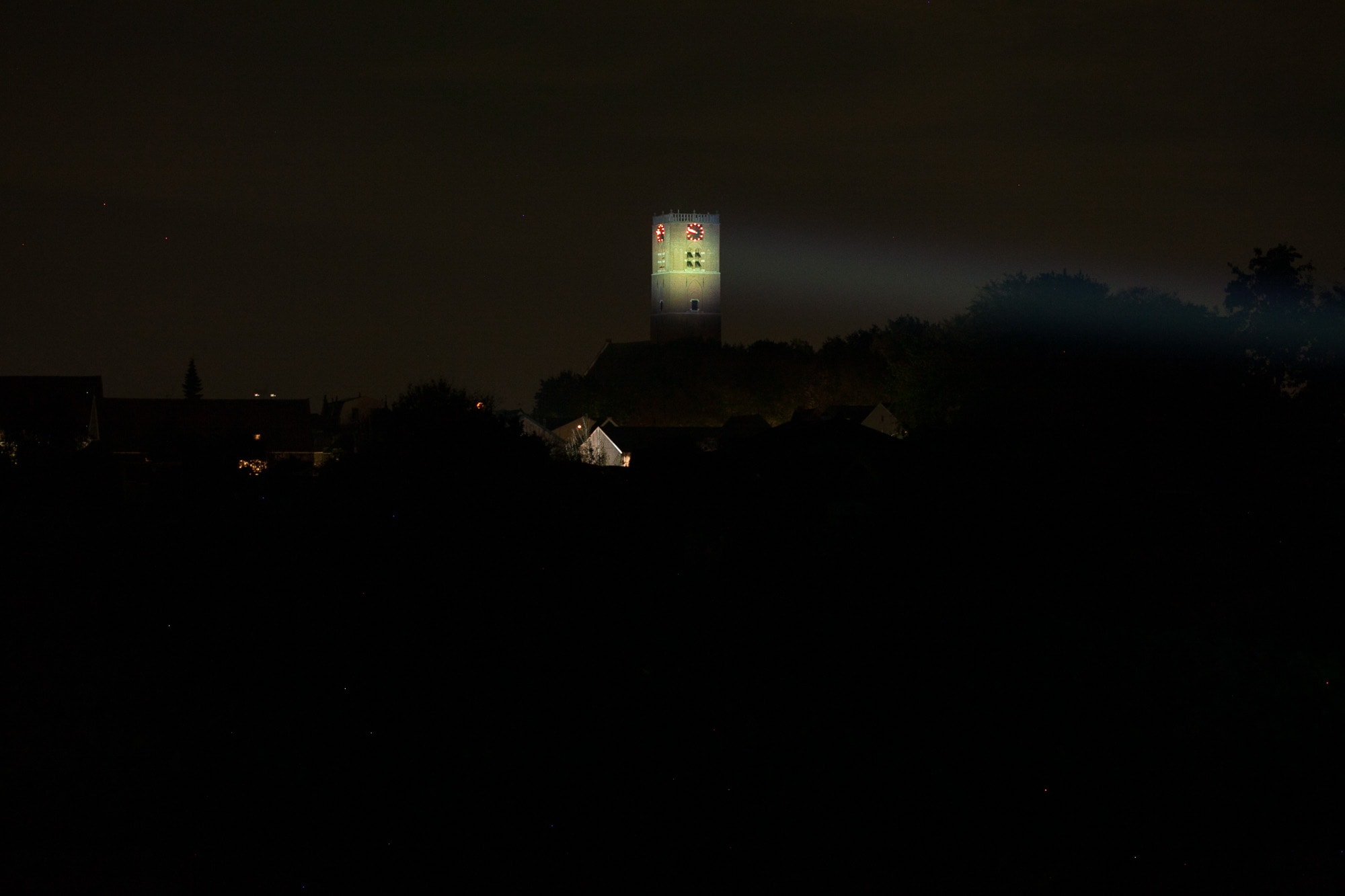
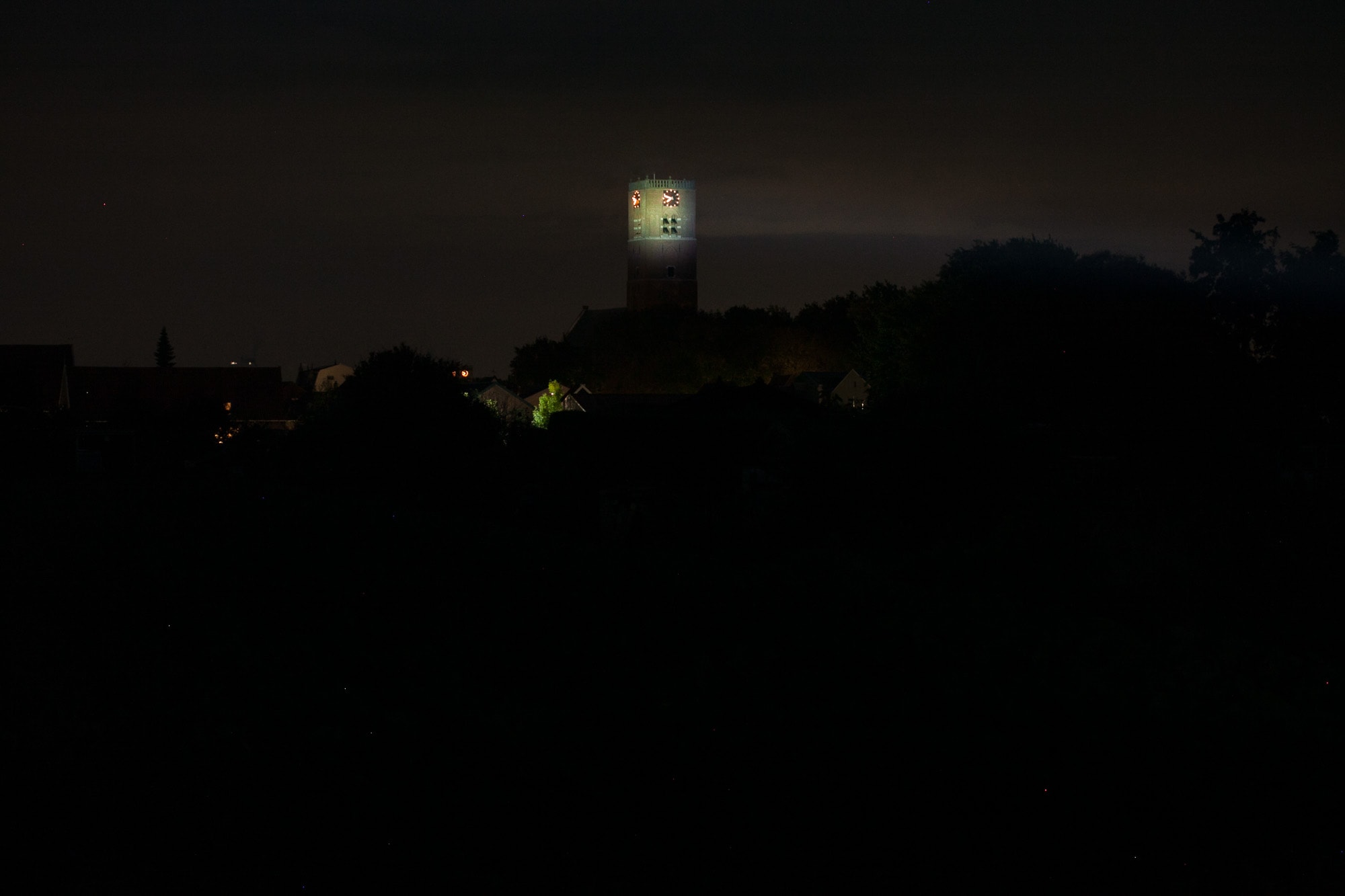
Here’s where I try to give some impression on the LEP beam at about 6 meters distance. It’s impossible to get the same colors on the screen as what I see in person. The middle one, the LEP01 is much more yellow in the center than in this picture. I guess I have to find another beamshot spot at about 100 meters where I would be able to show the LEP beams better.
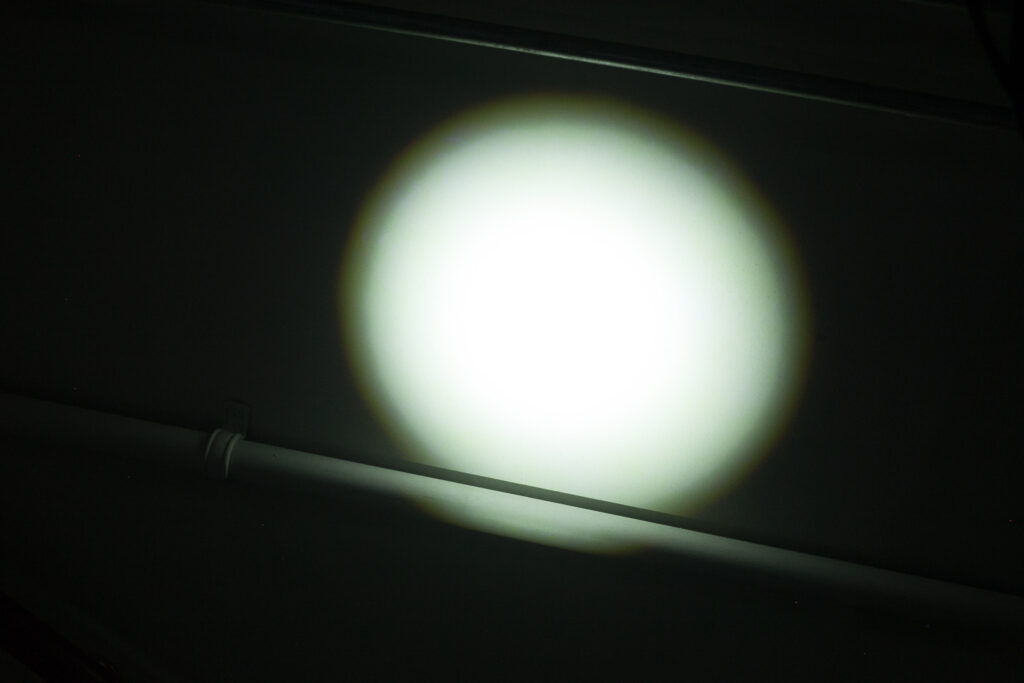
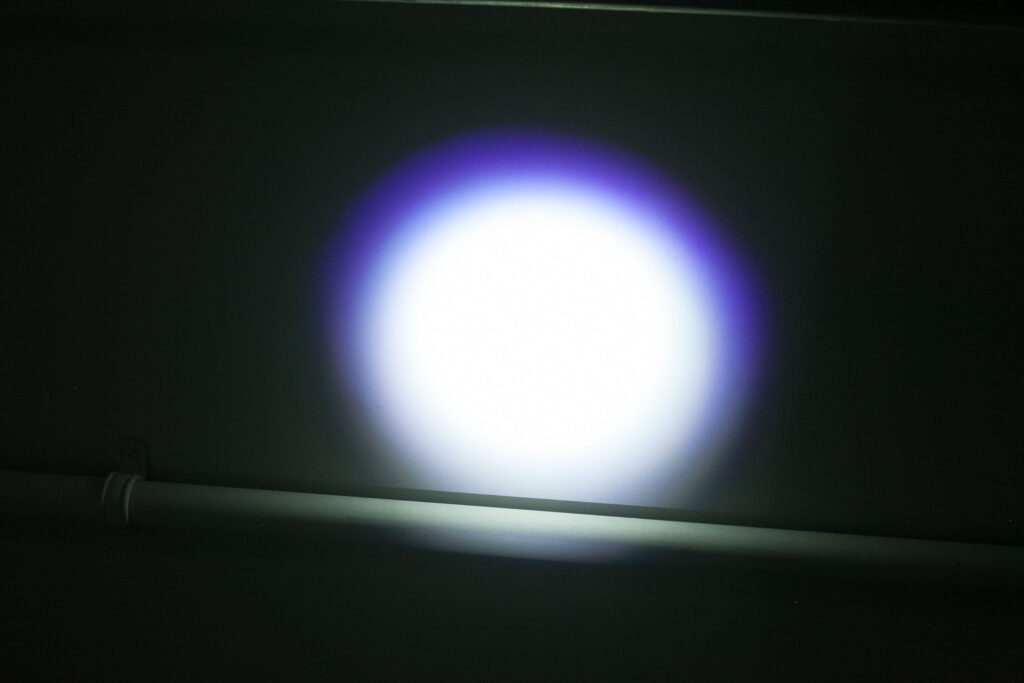
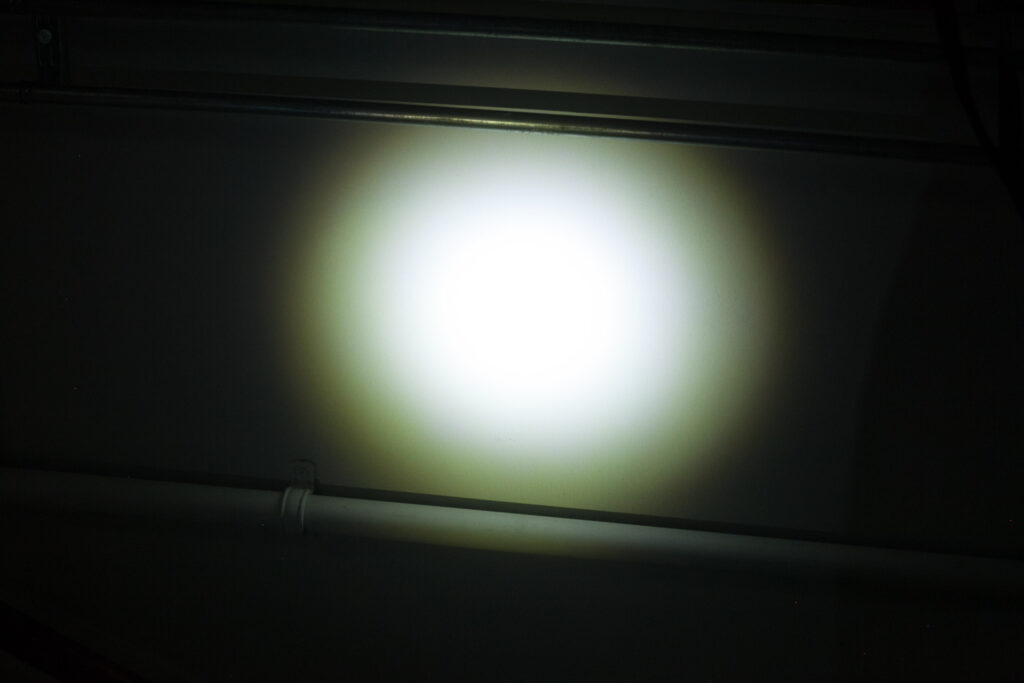
Disclaimer: This flashlight was sent to us for review at no cost by Fireflylite. We have not been paid to review, nor have we been holding back on problems or defects.
Final Verdict
Pros
- Pretty nice design
- Only 2 modes, High and Low
- Always starts in High
- Has a Tactical mode (momentary mode)
- Longer runtimes than advertised
Cons
- Rough bare threads
- Loose secondary tube
- (de)activating AUX LEDs is not easy
- Double click for strobe
- Something sits loose inside the flashlight when shaking
Explanation on star ratings:
1: Avoid: my phone flashlight would be a better choice – 2: Poor: significant defect or issues; almost unusable – 3: Average: some defects or issues; but still usable 4: Good: recommended (minor issues) – 5: Great: highly recommended

?
While our star rating provides a reliable indicator, we encourage you to read the full review to make an informed decision based on your own needs and preferences.
My Fireflylite LEP01 definitely feels like a prototype product, and I hope they will read this review before starting mass-production.
The flashlight itself works as expected, and with a few interesting features. The easy main menu with just High Low, and the Tactical mode are nice to have.
But that’s about all I can like about the UI. The hidden lockout mode in the main menu (4 clicks when on) and the 9 clicks for (de)activating AUX LEDs need some revision in my opinion. Also, the double click for strobe doesn’t make too much sense to me either.
On top of that, the beam of the LEP01 is very unique, but hard to like. Mine has a very yellow center with some blue rings around the beam. I tried to show that in the picture, but it’s hard to do. I hope they can fix those before sending them off to their customers.
I can’t, but refrain from rating this light based on my prototype sample. If this was the mass-production one, I wouldn’t rate it very high…
Buy your Fireflylite LEP01 Hunter here:
Get 25% off with our unique discount code: FF1lumenLEP
1lumen selects and reviews products personally. We may earn affiliate commissions through our links, which help support our testing.